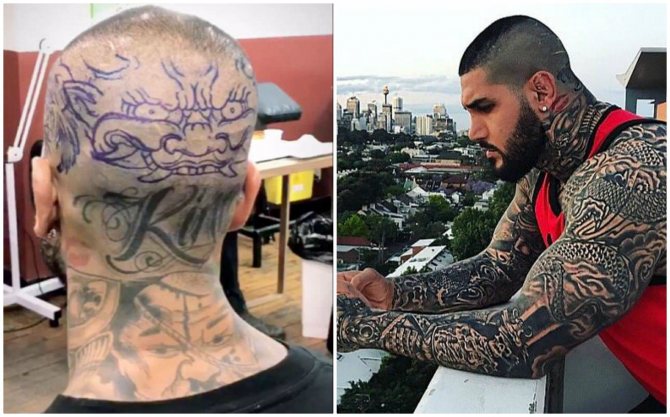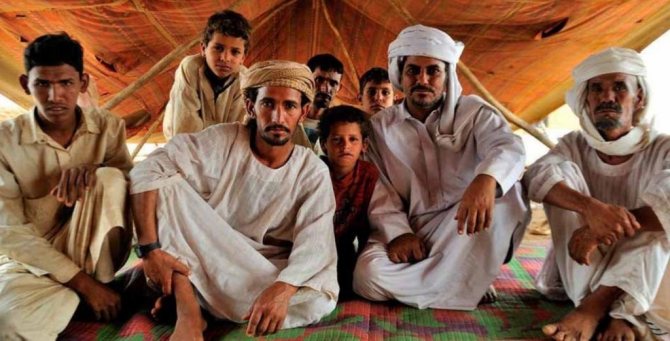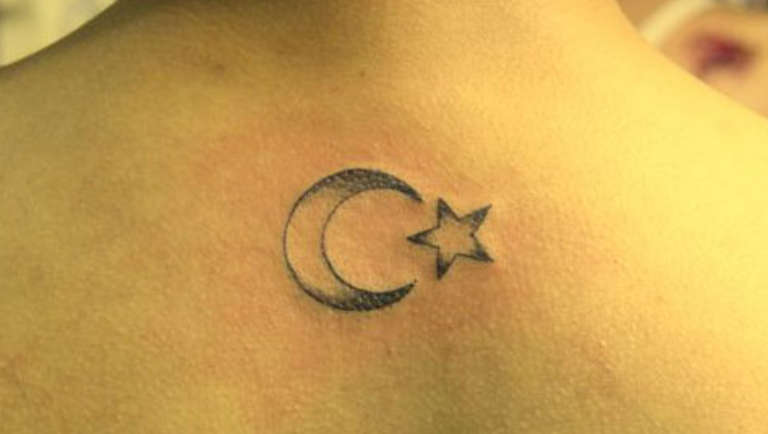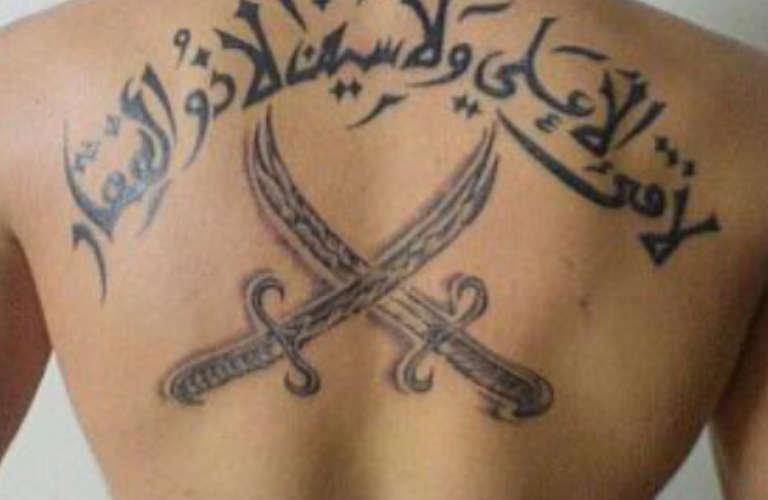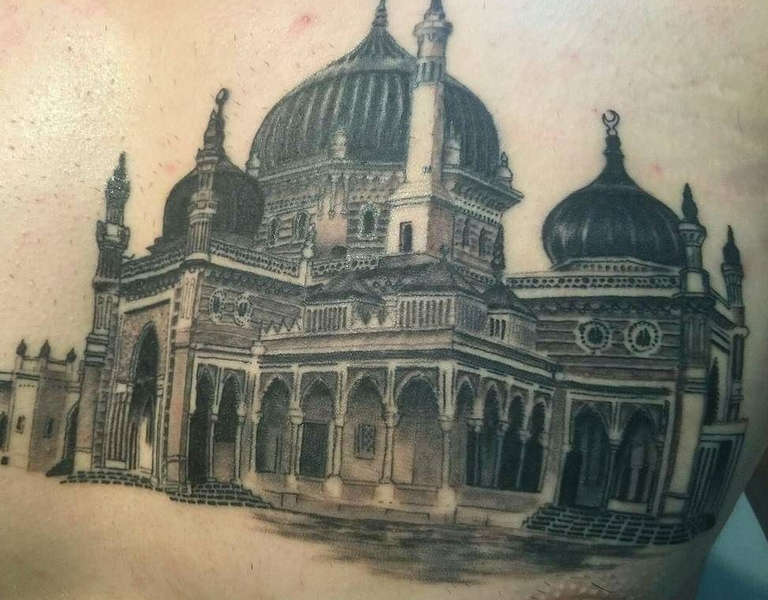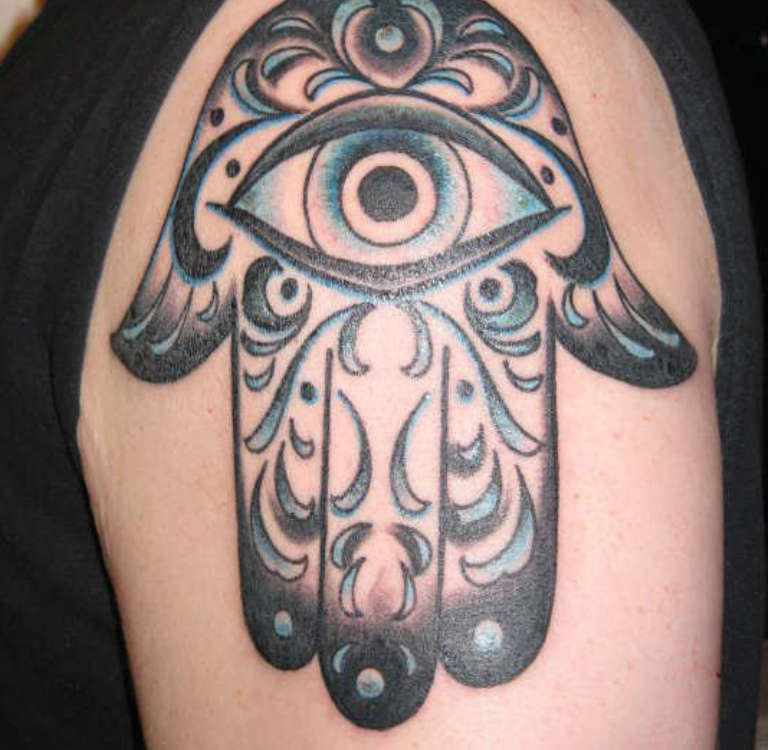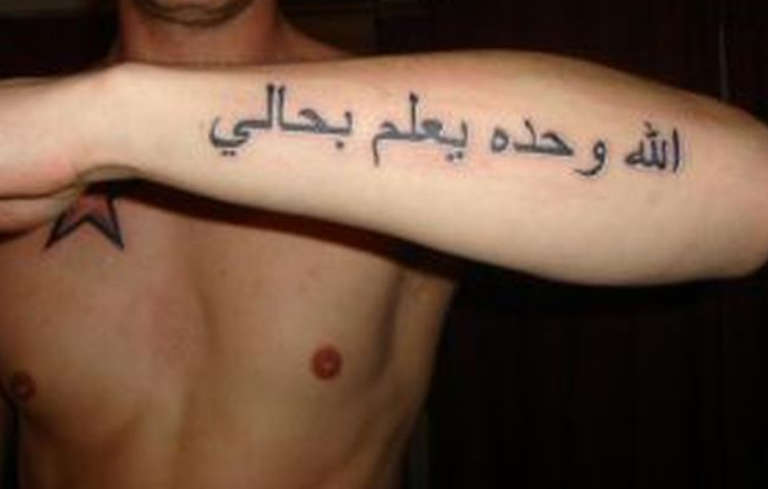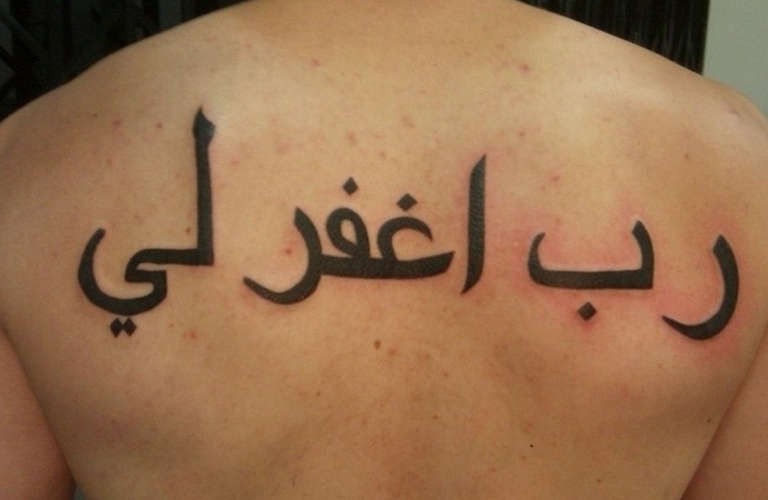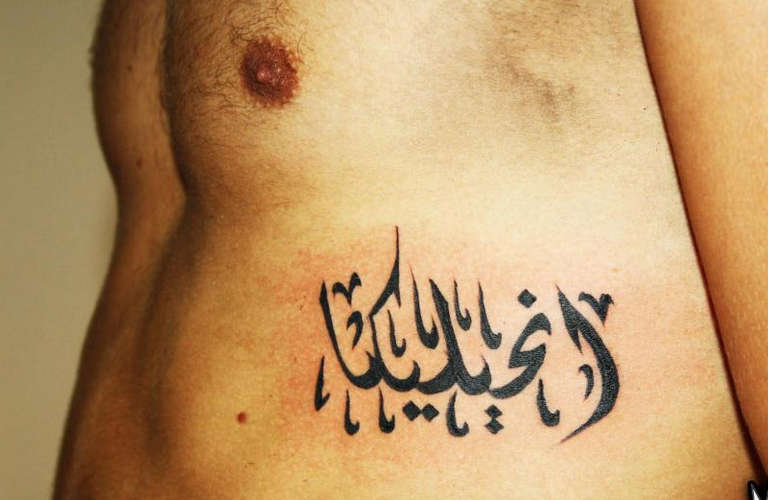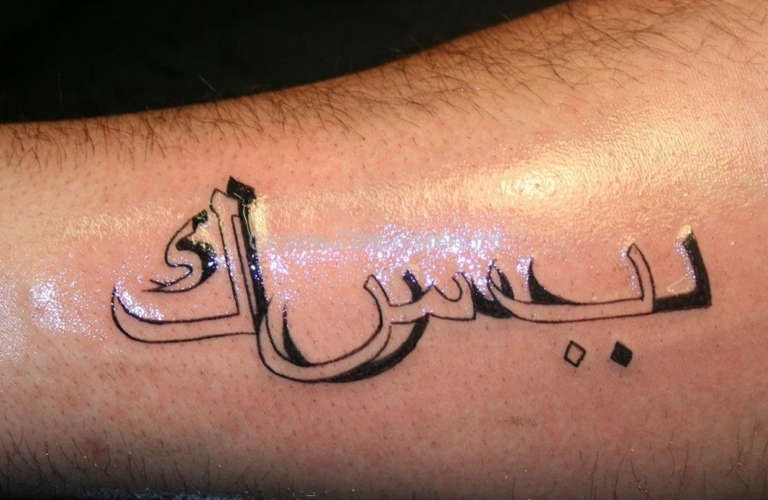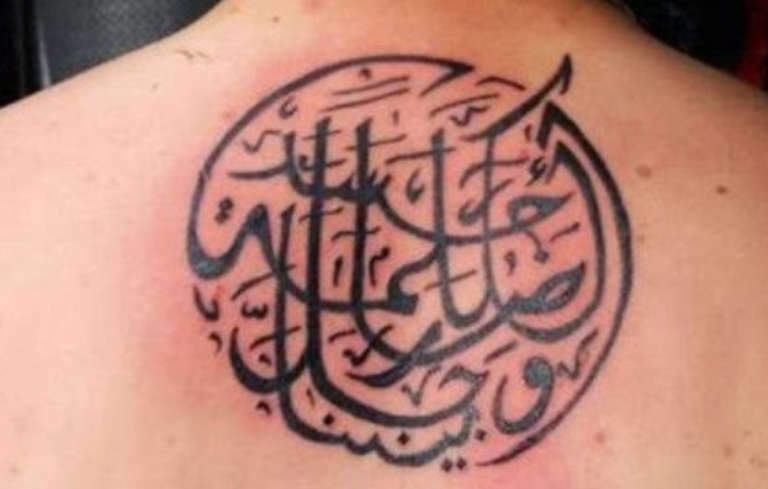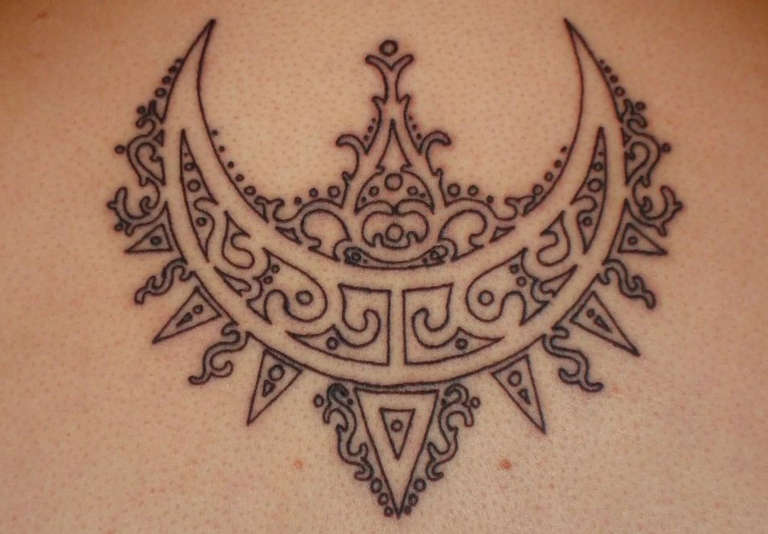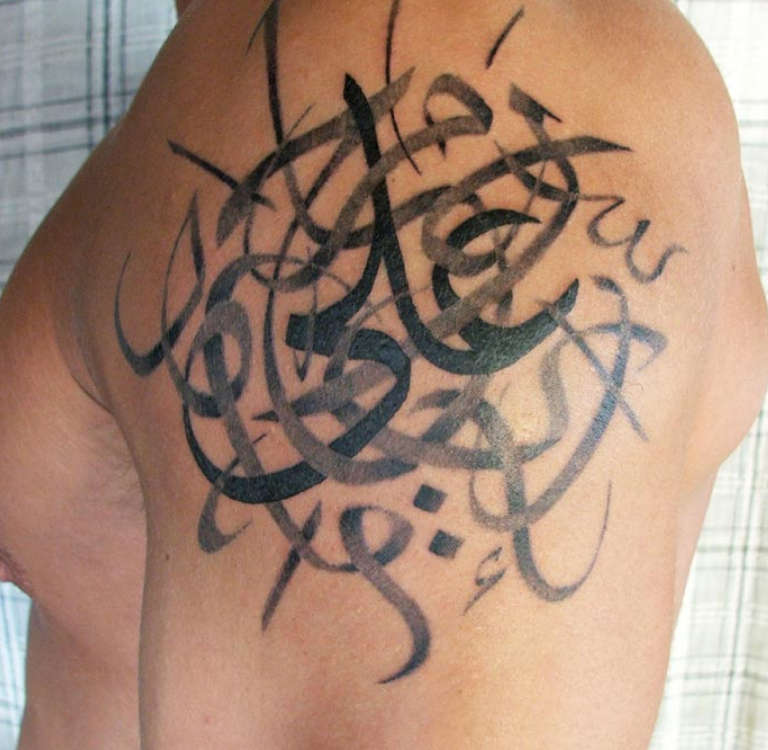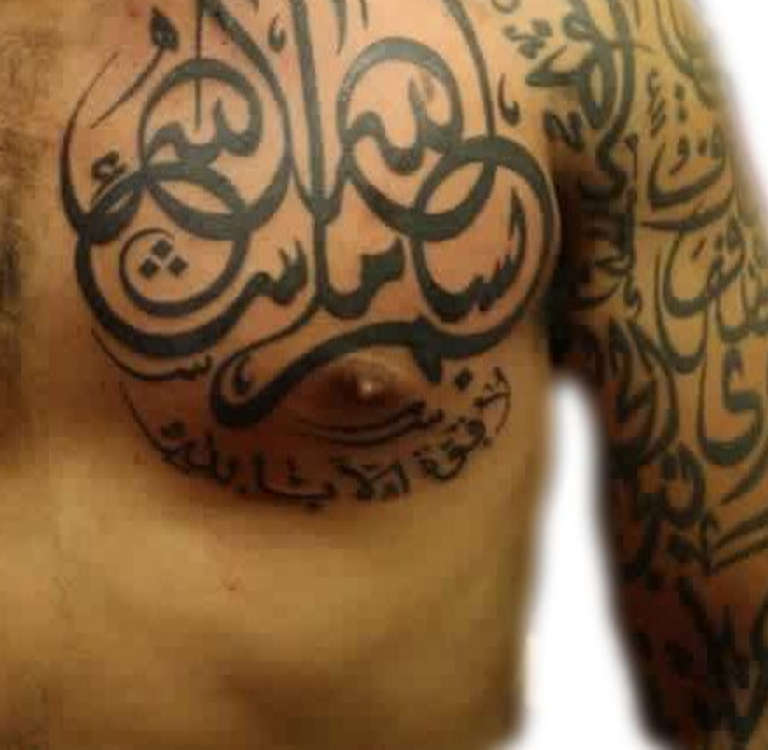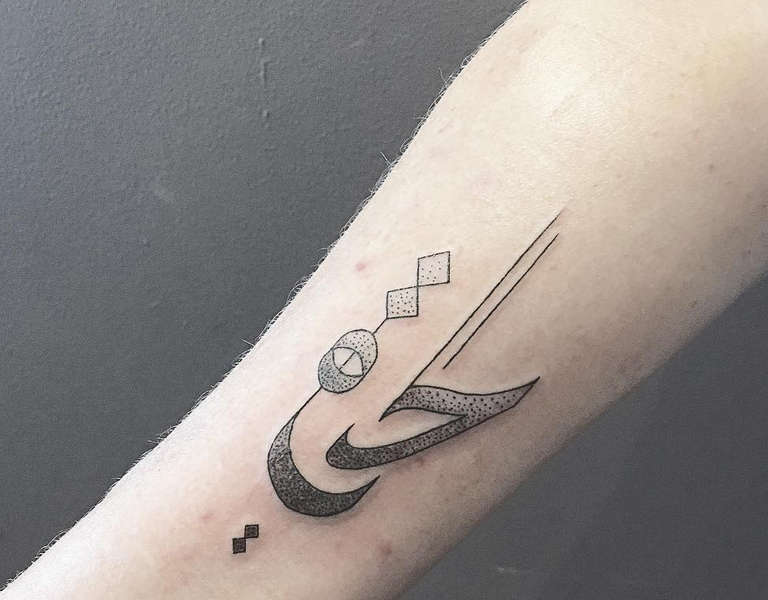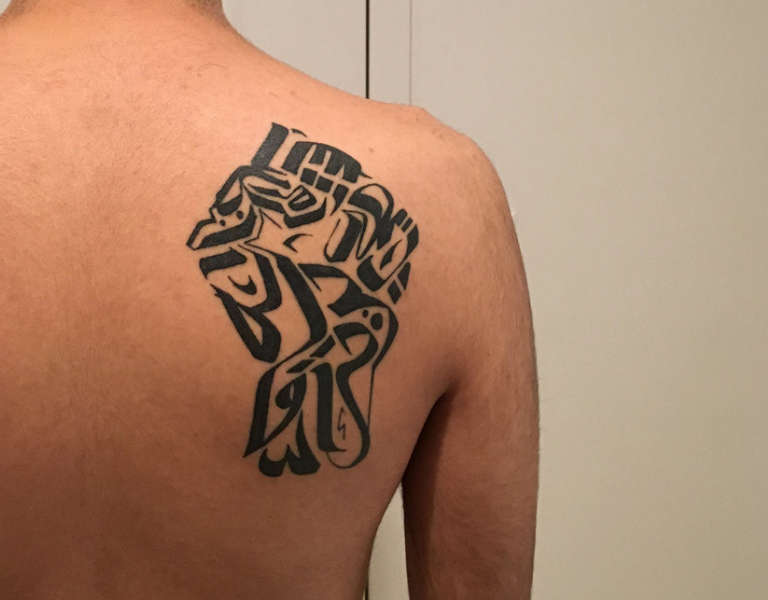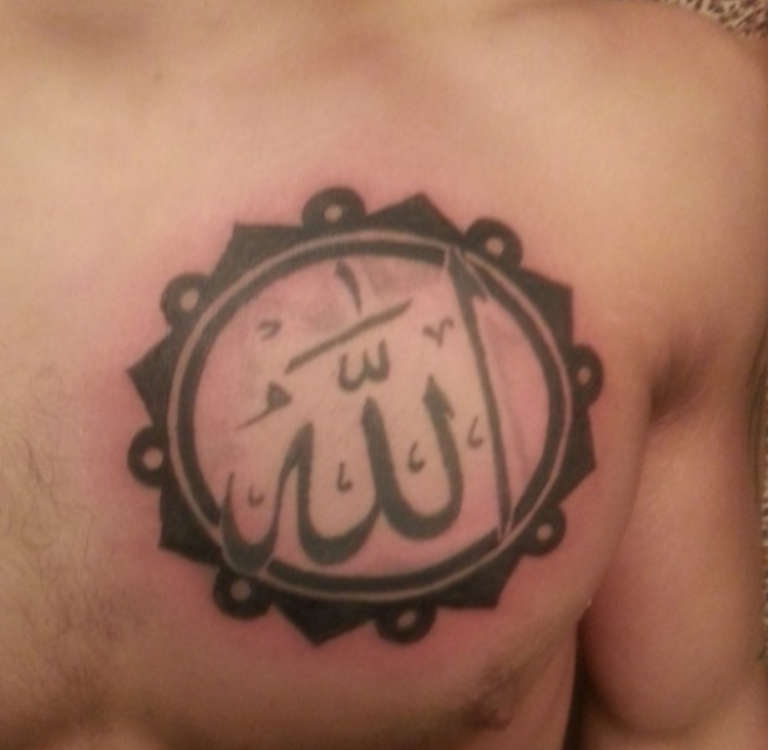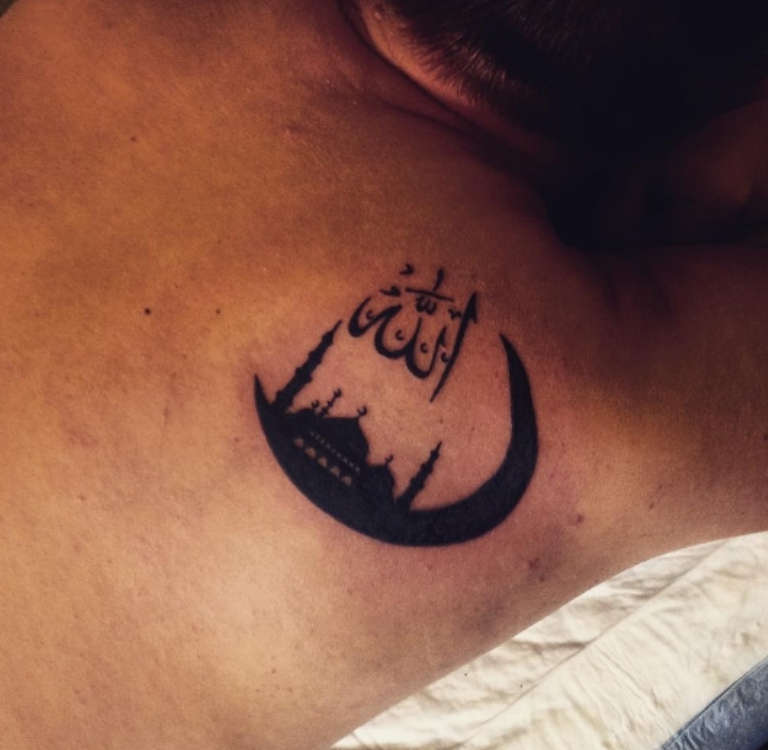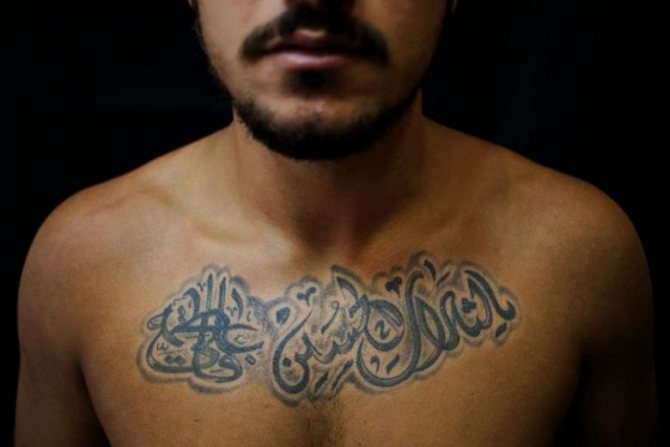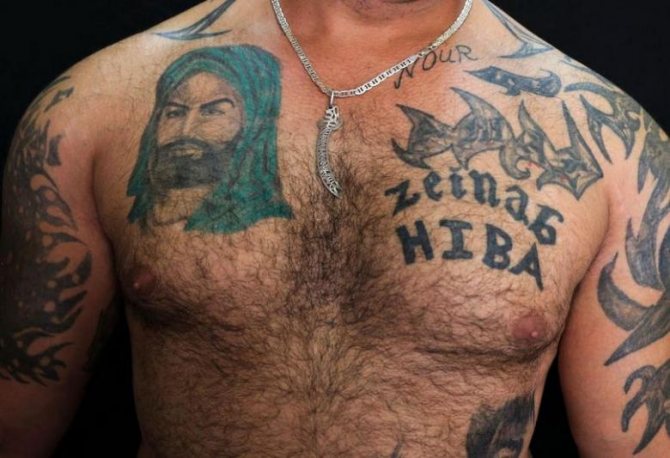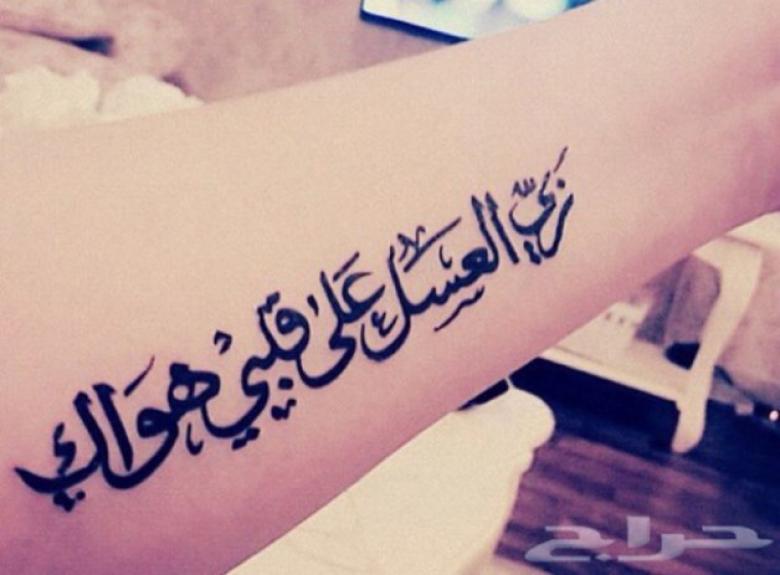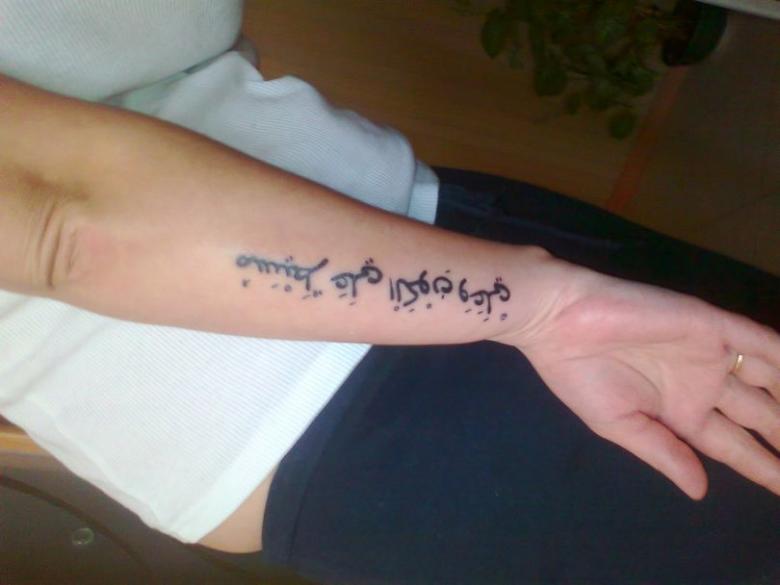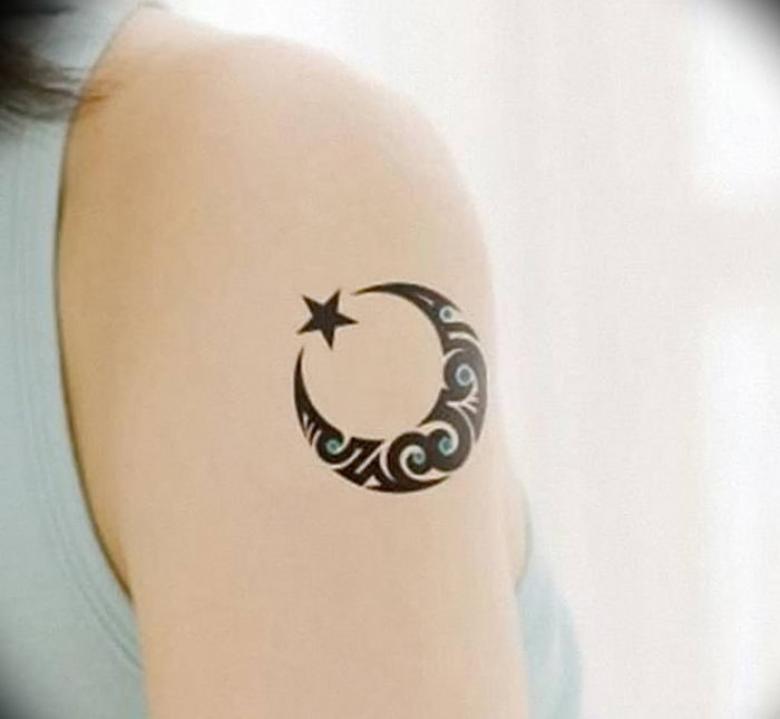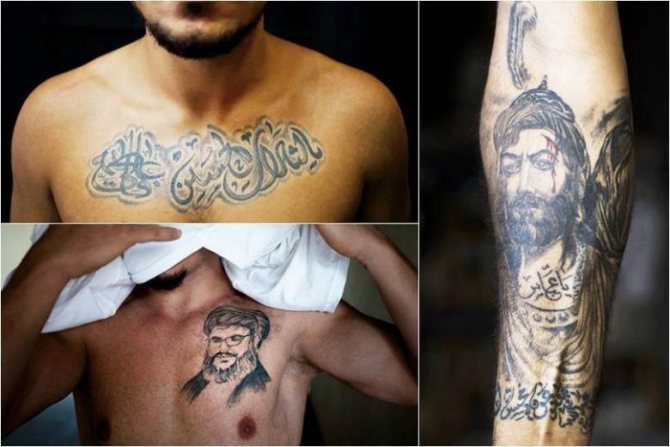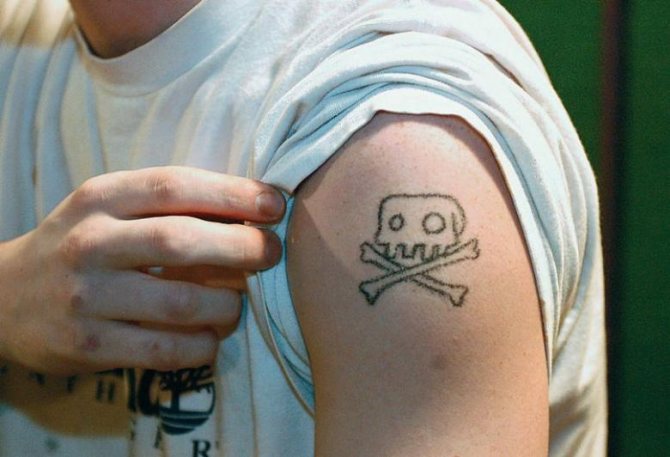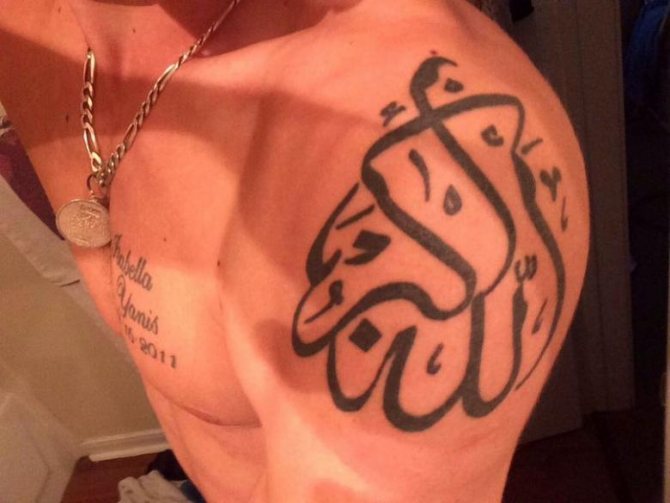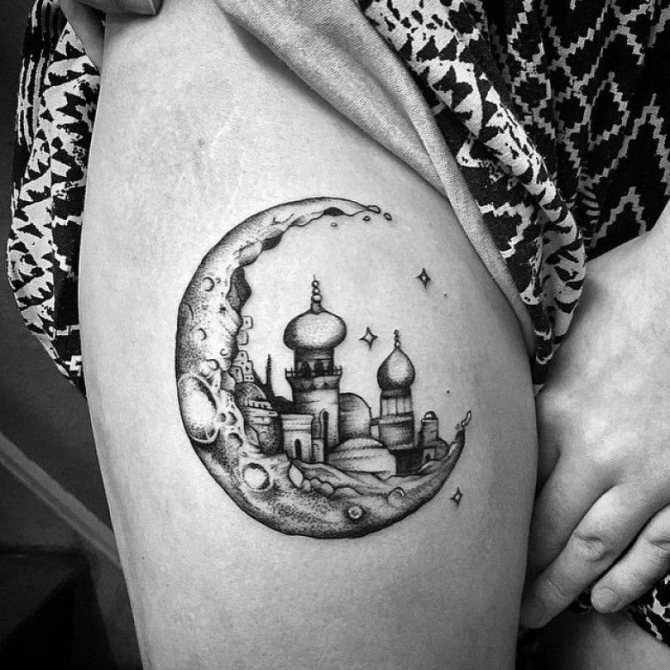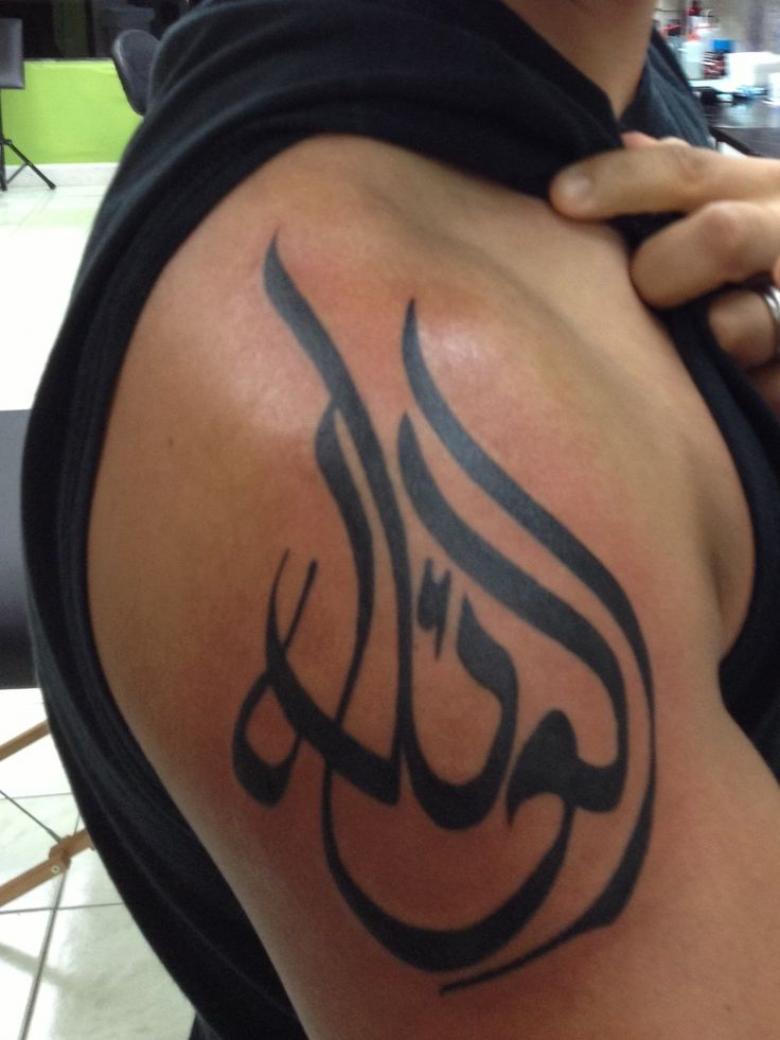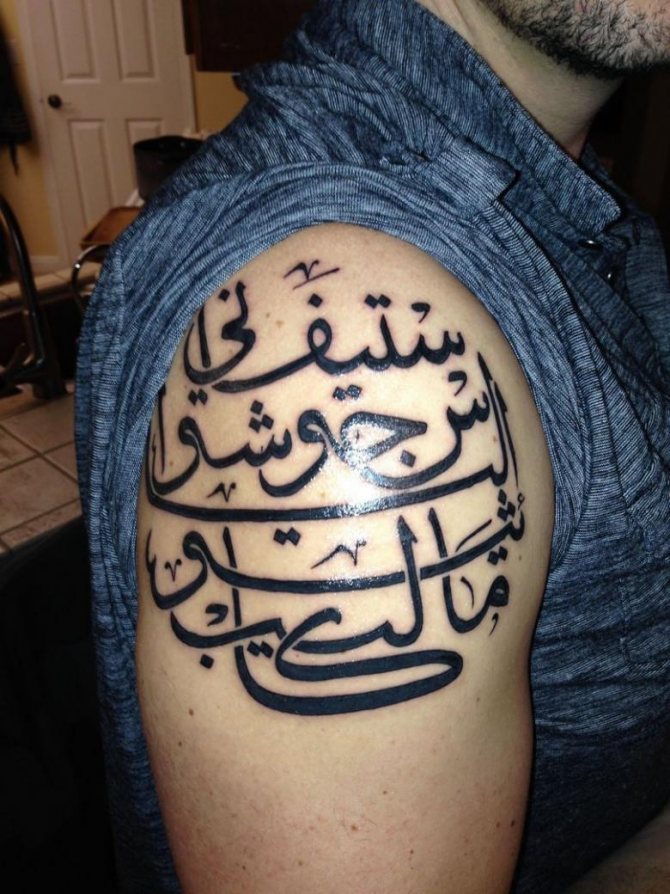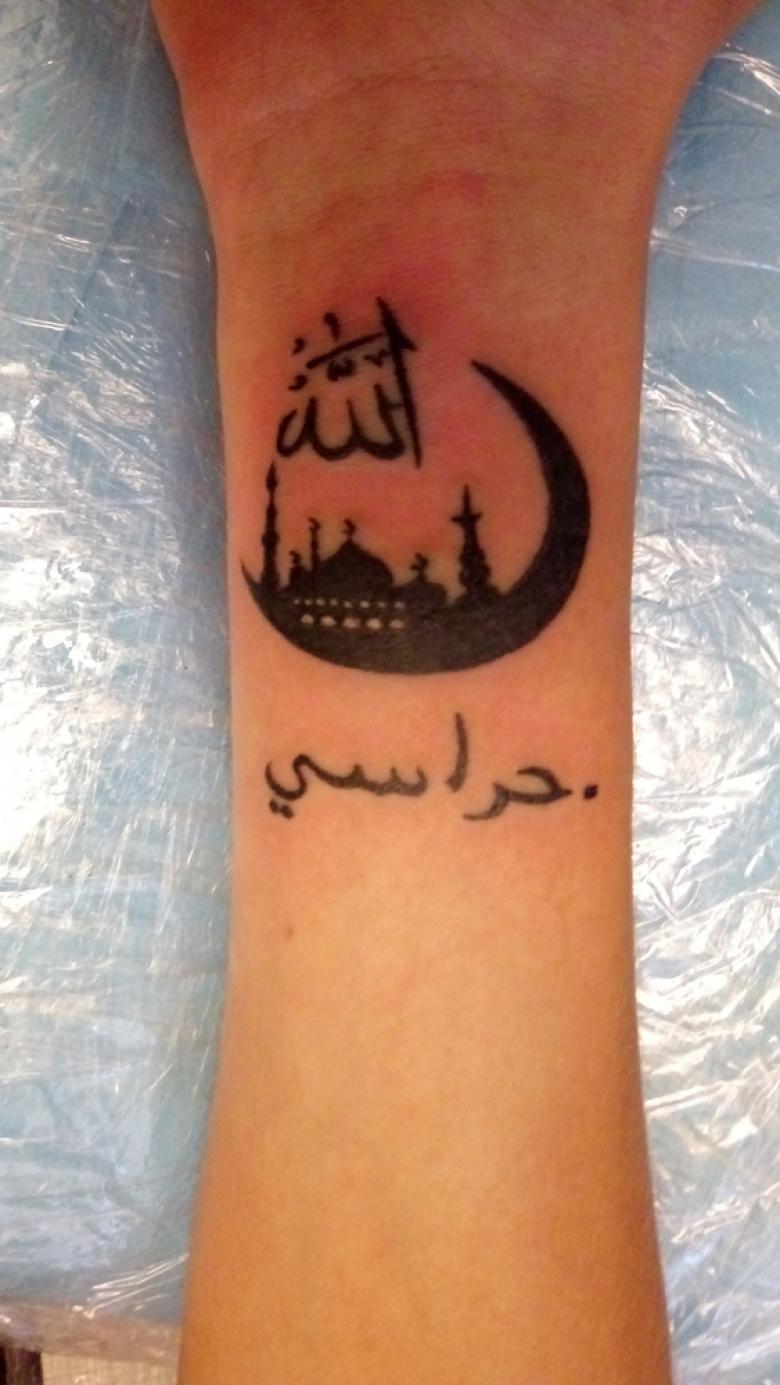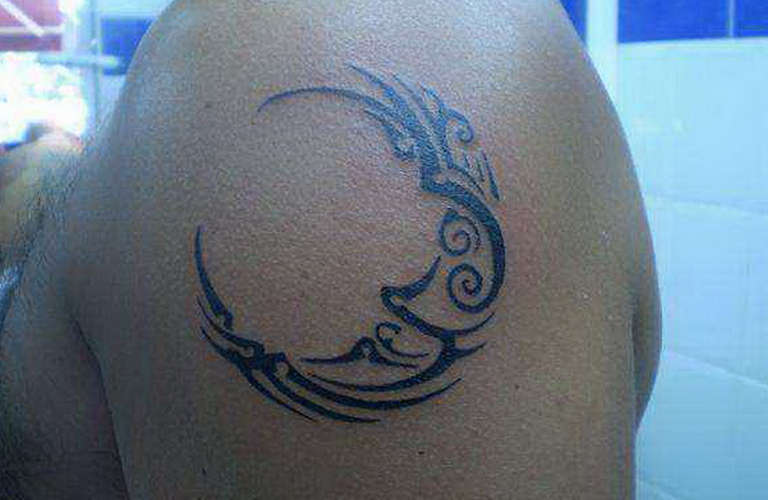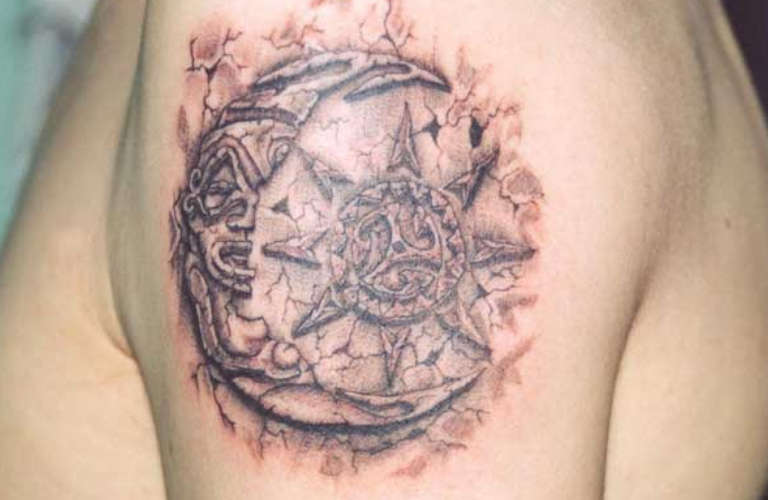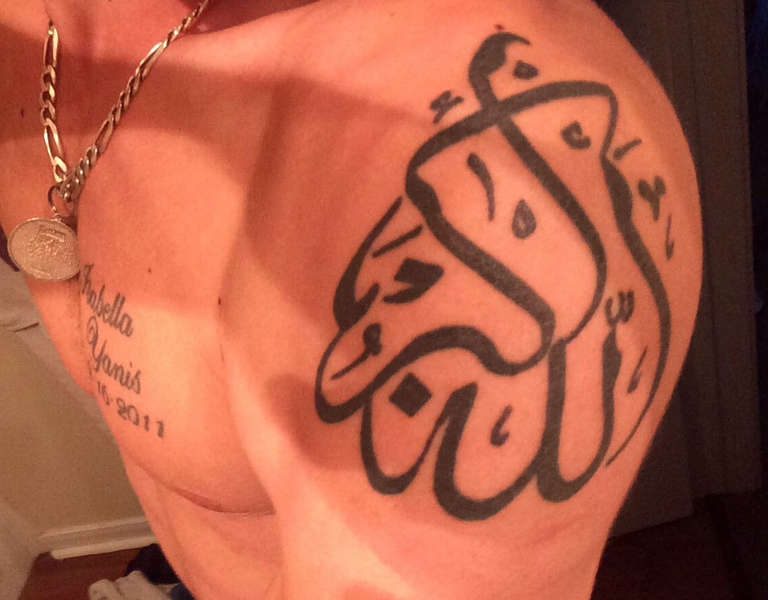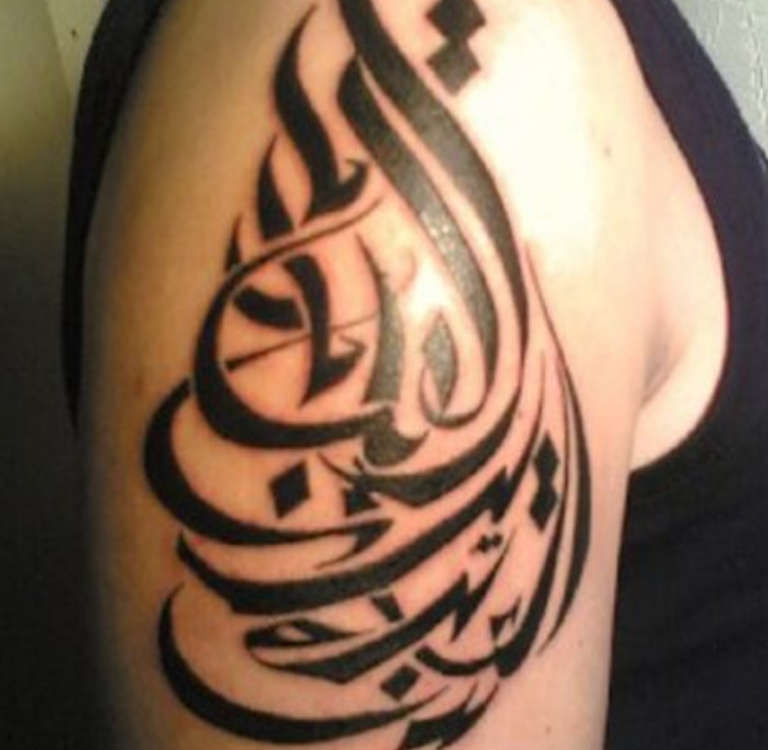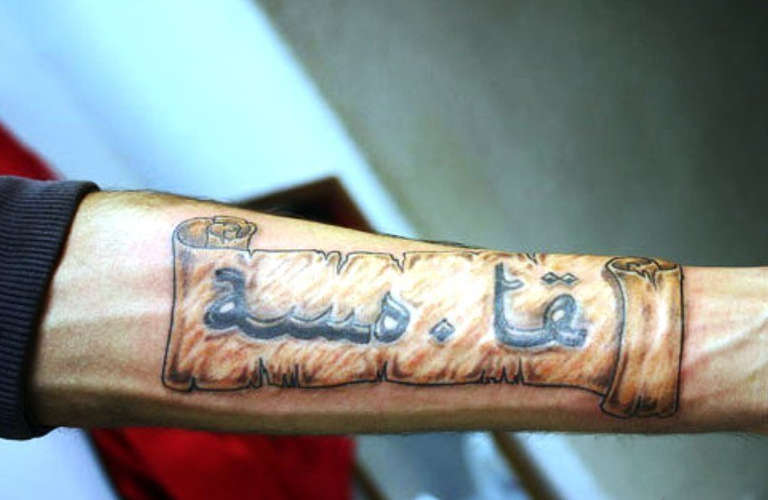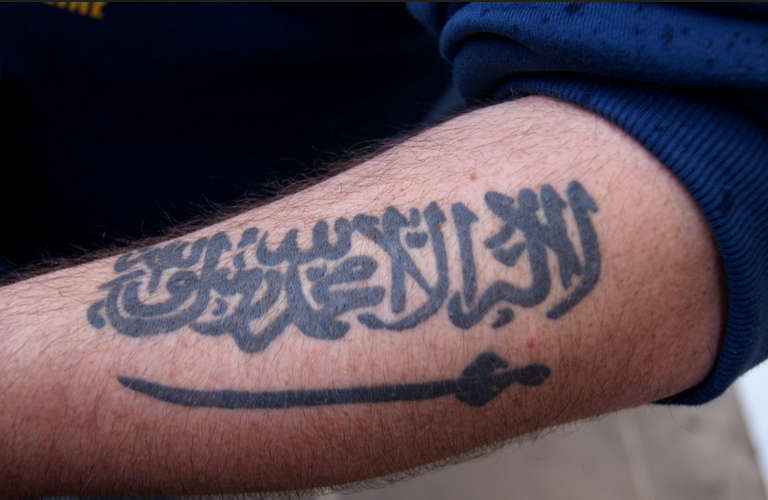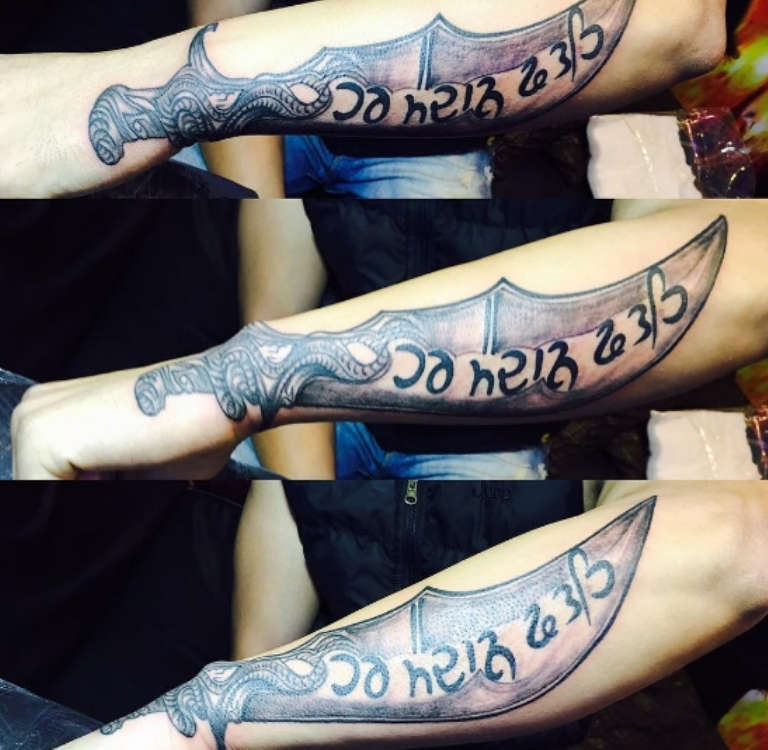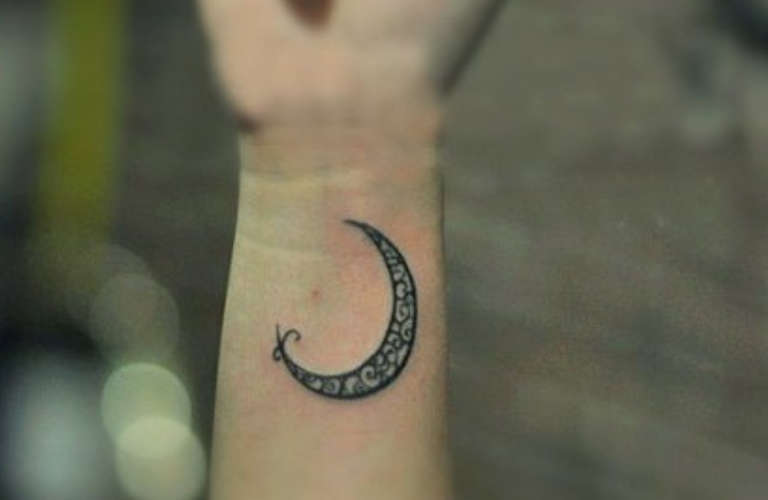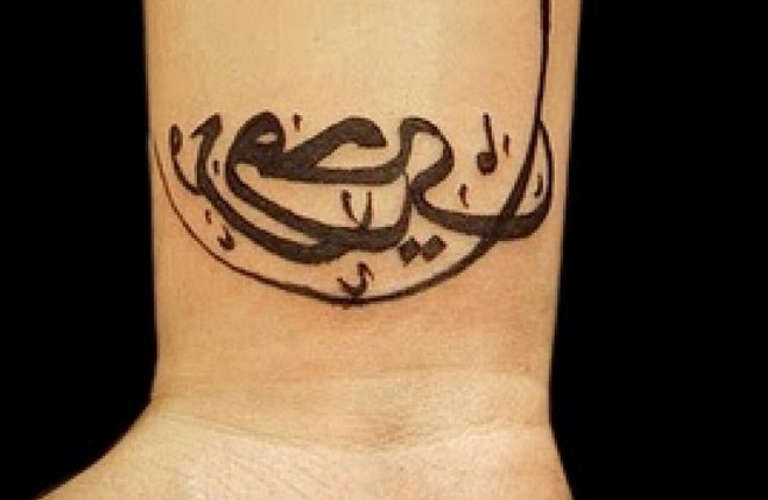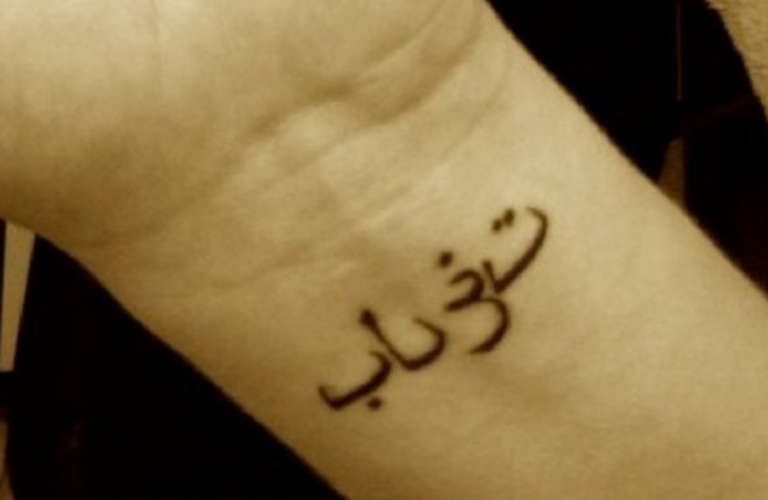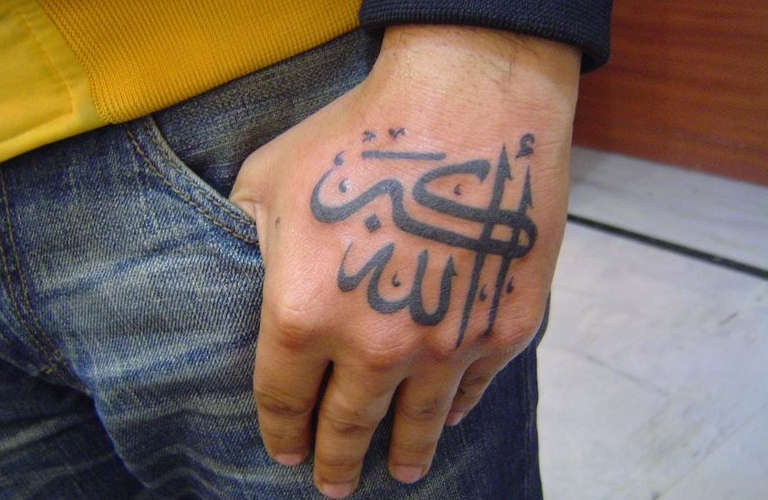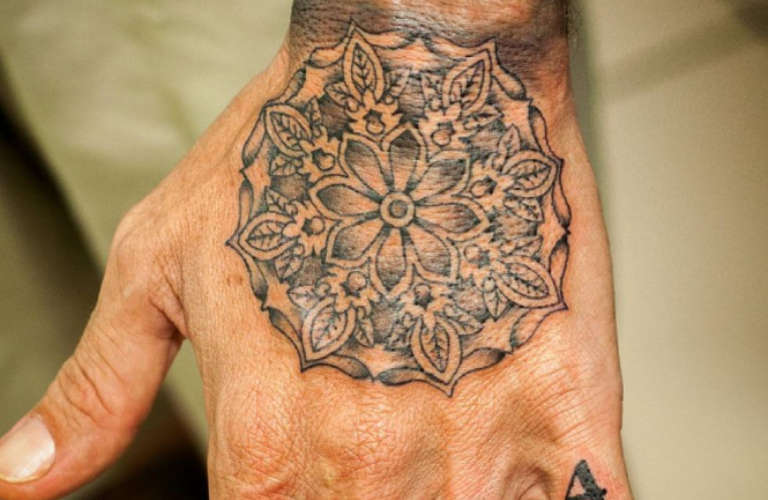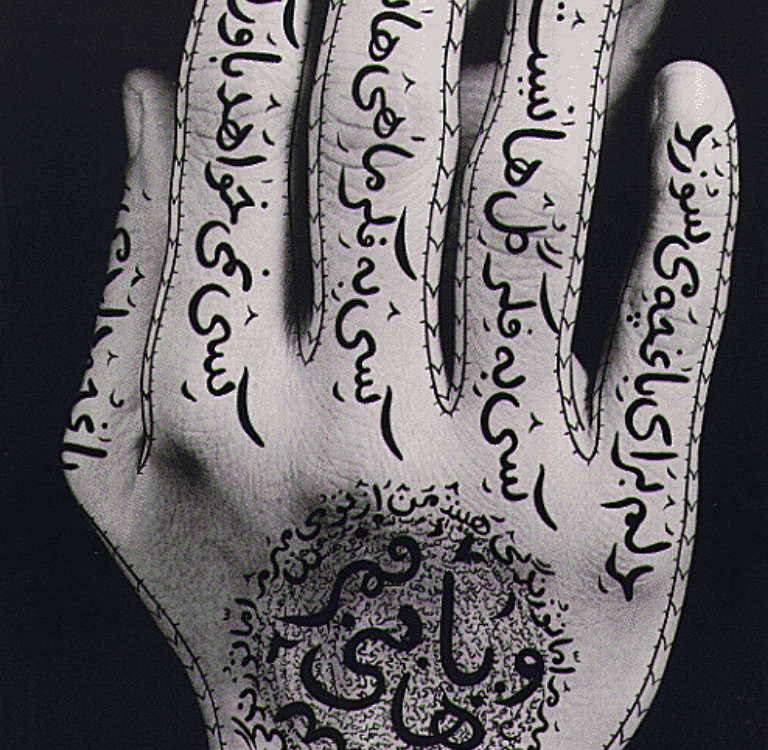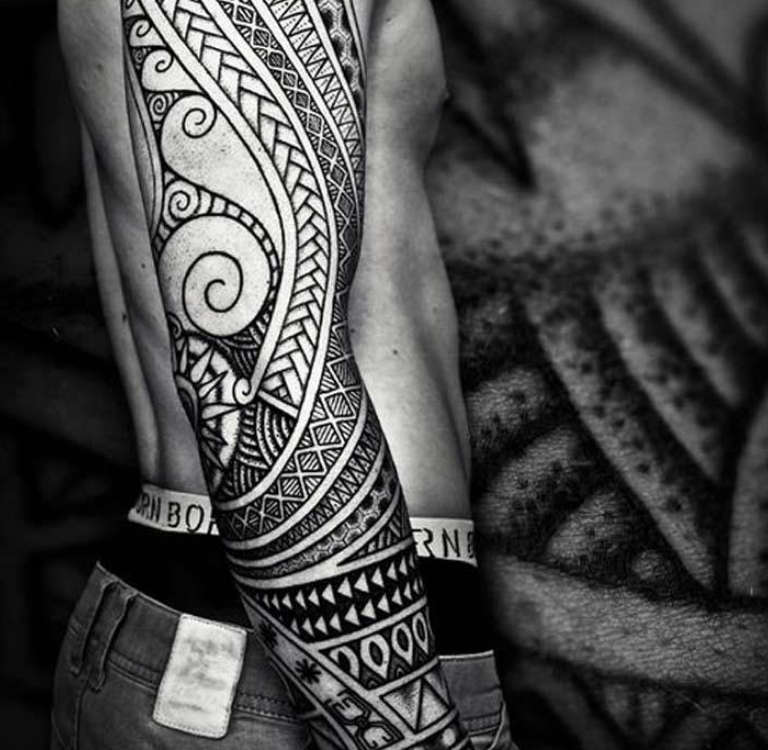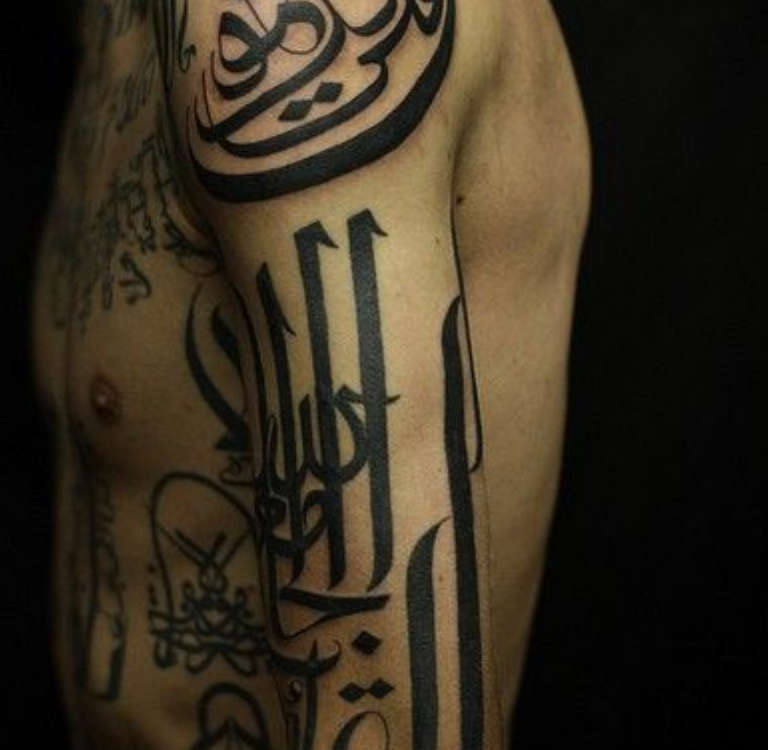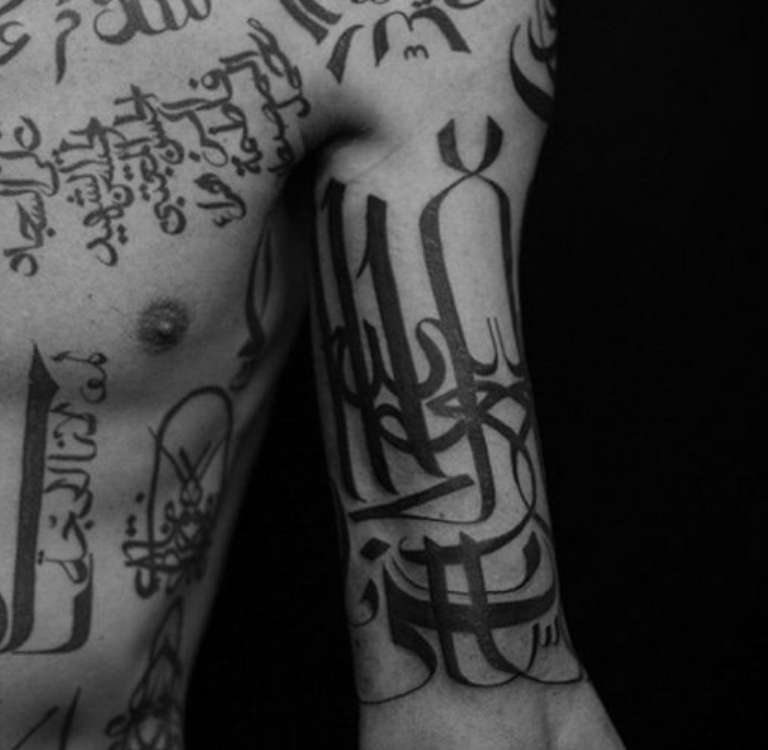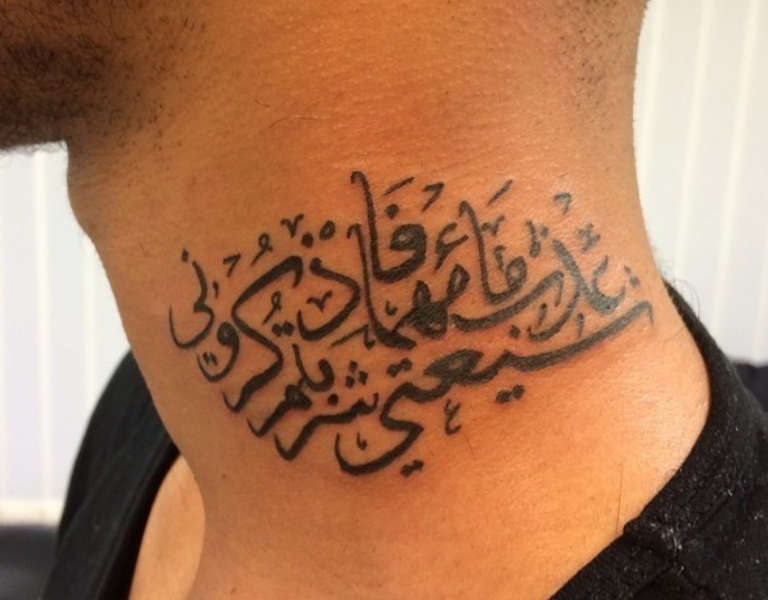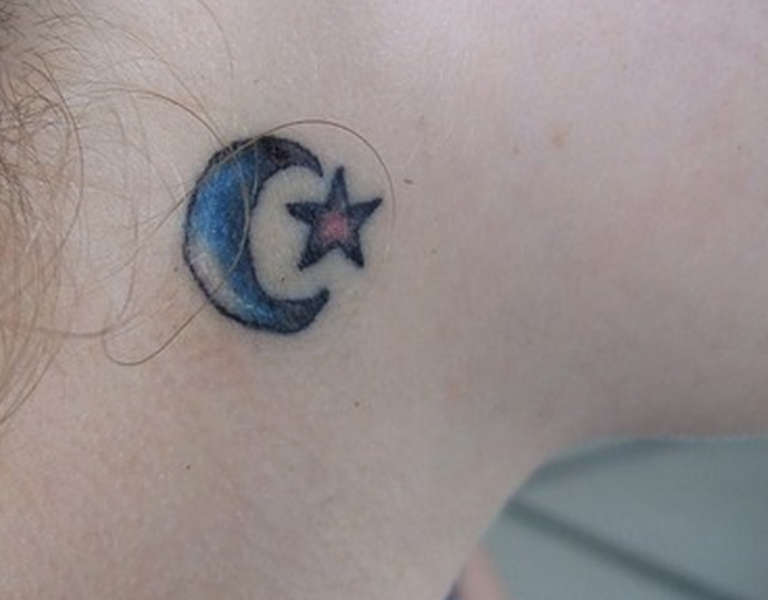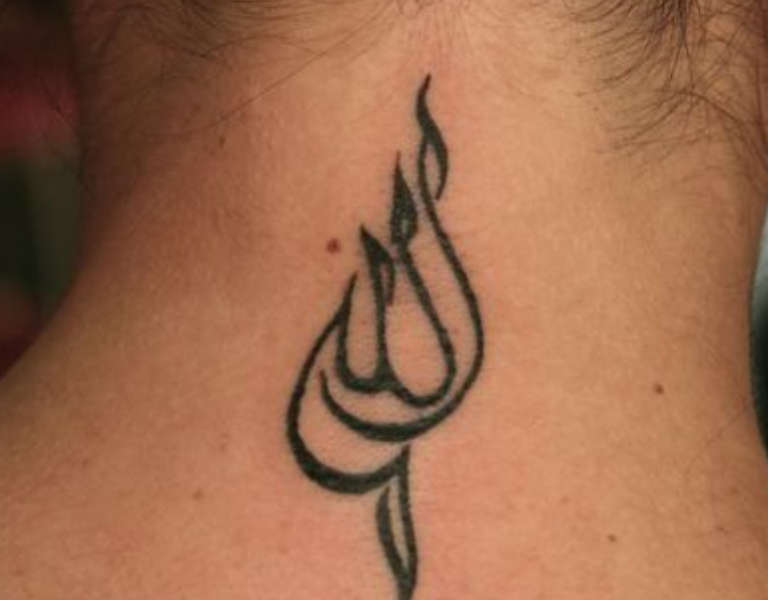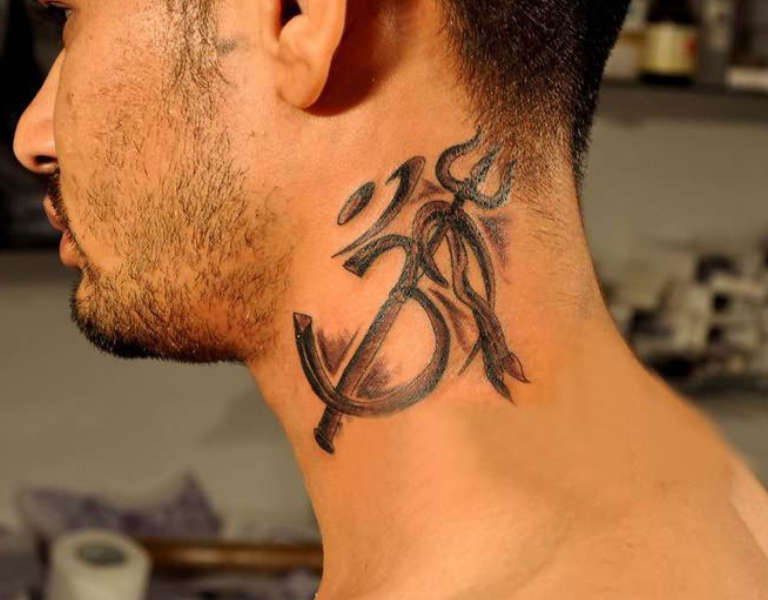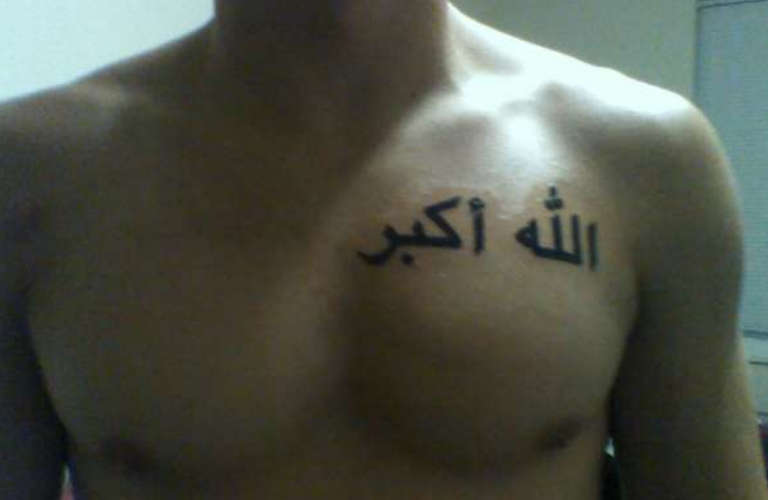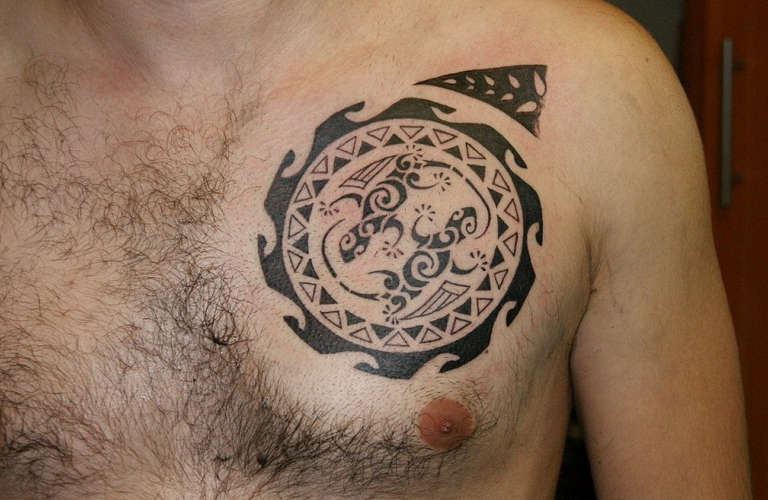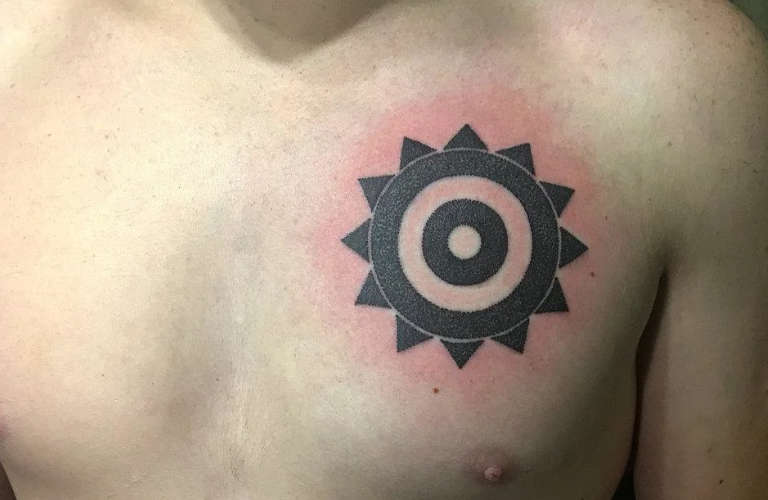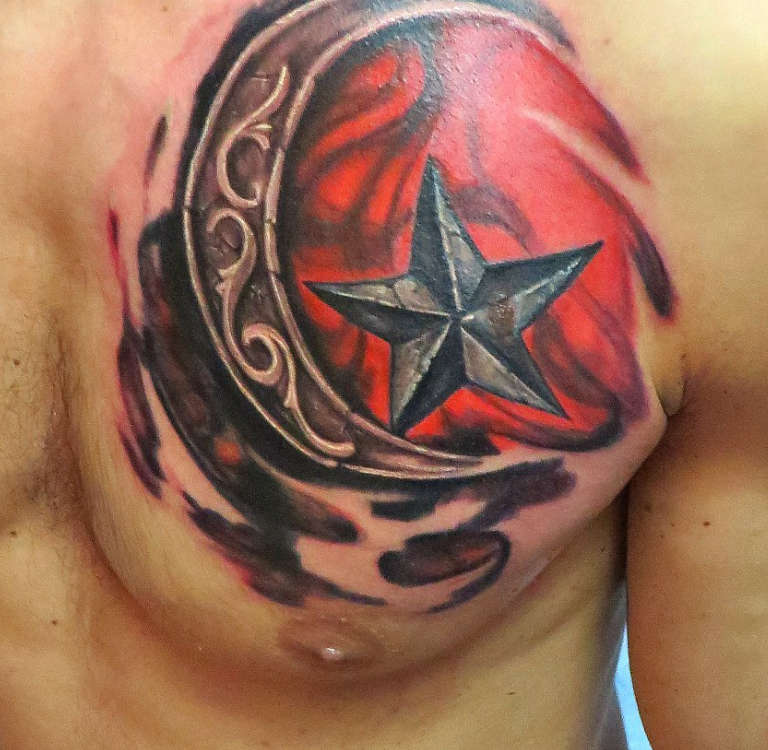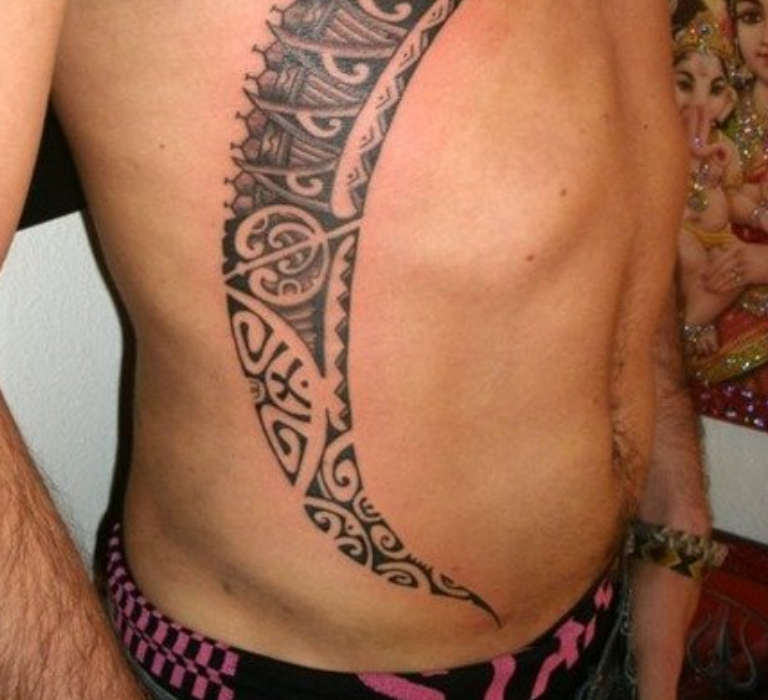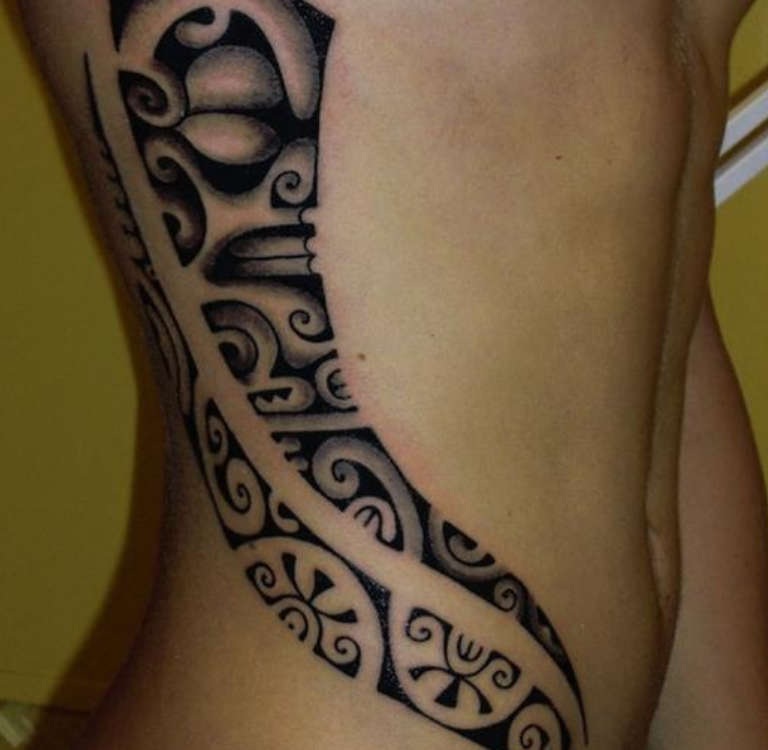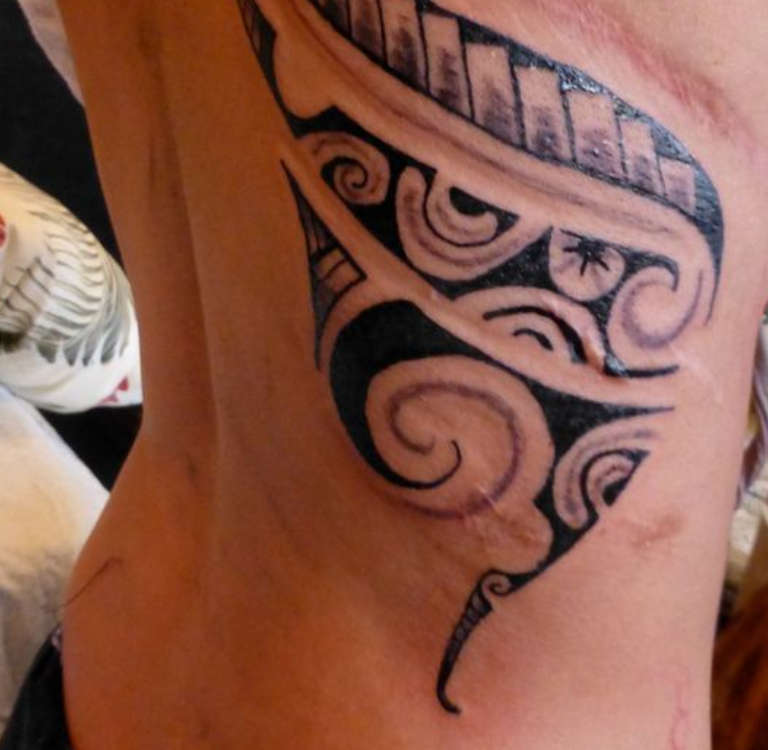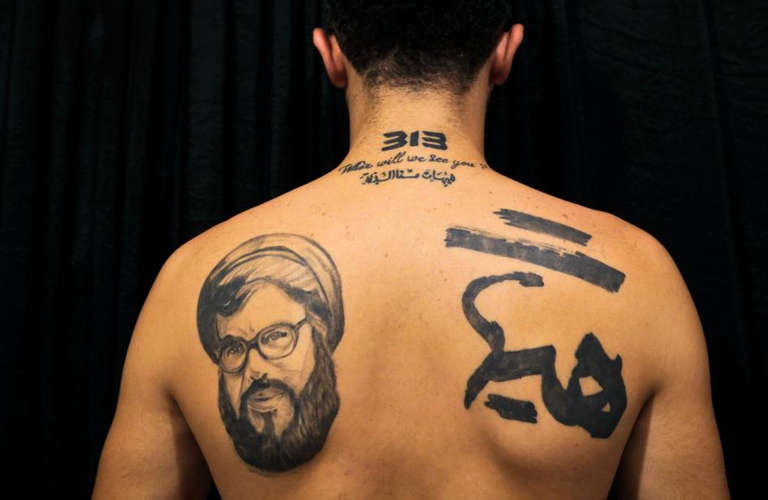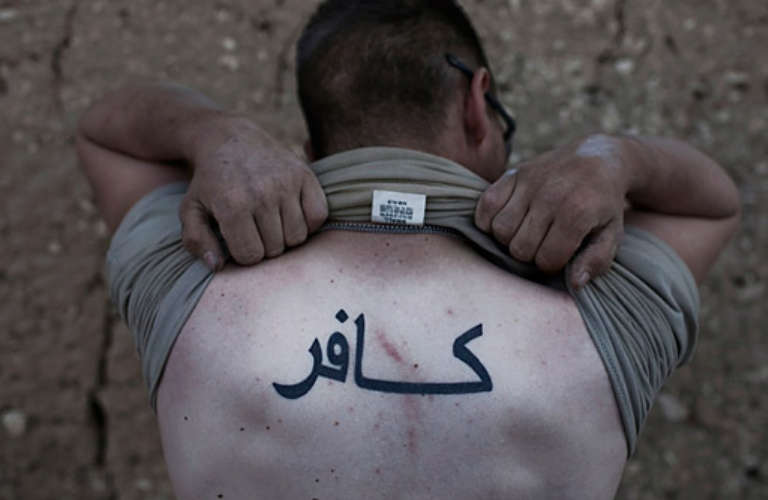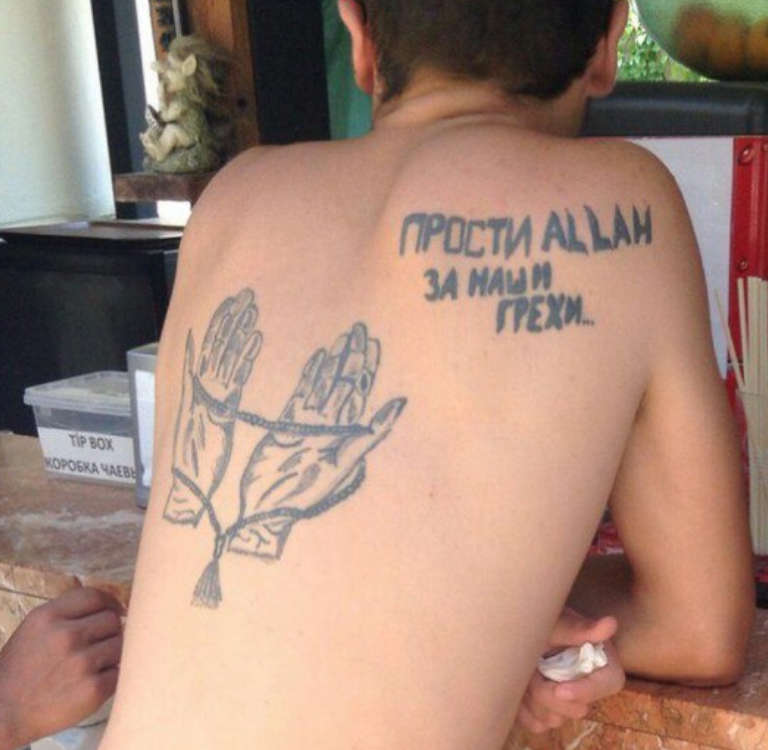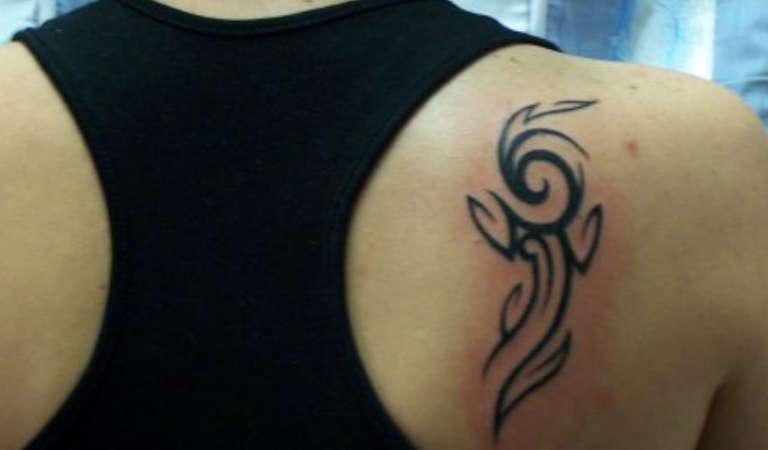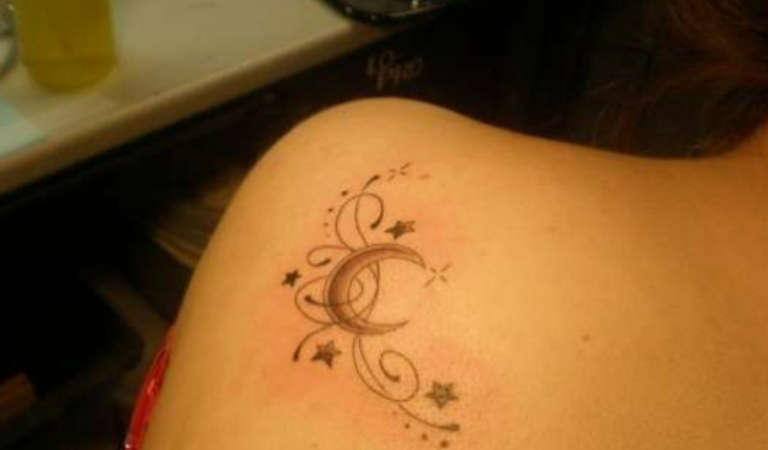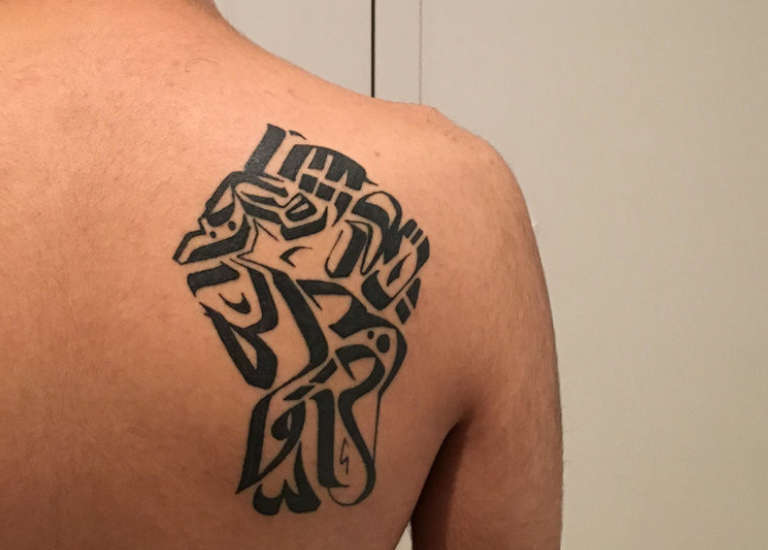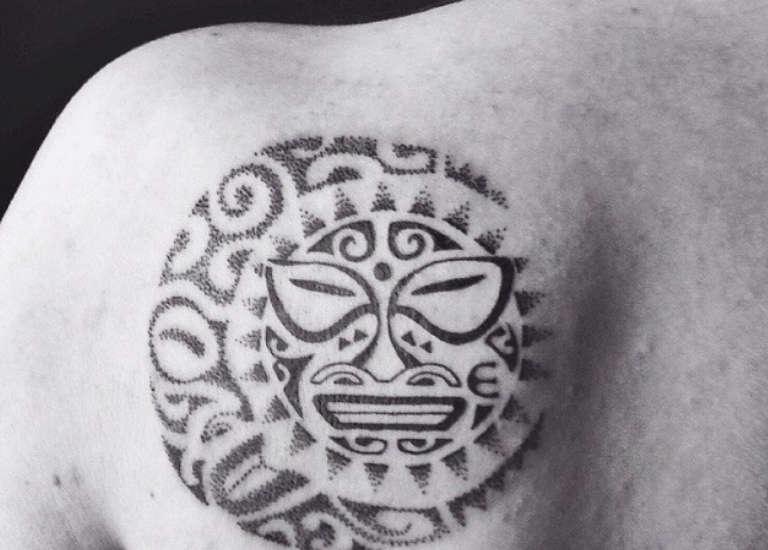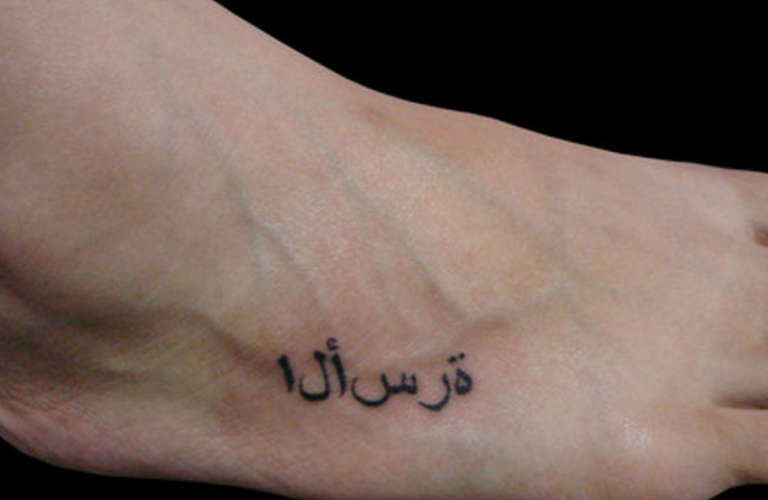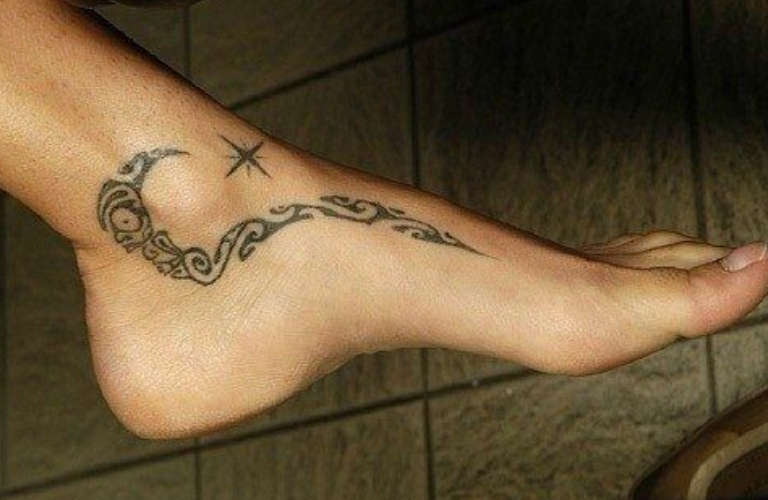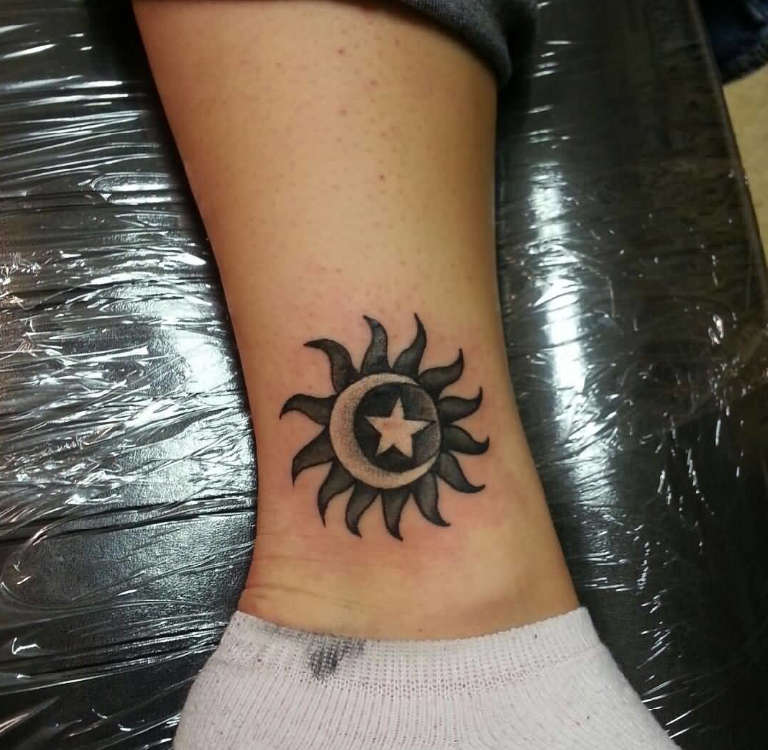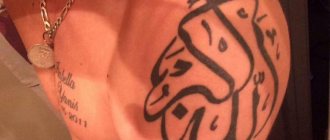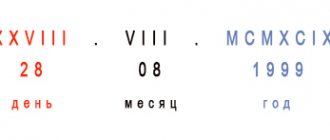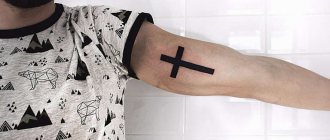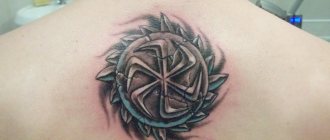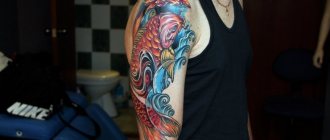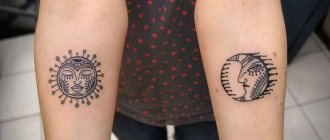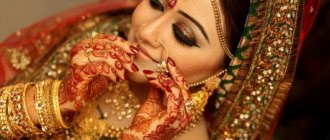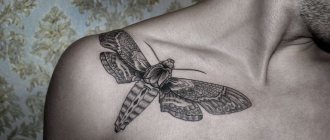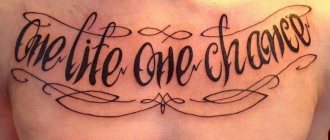Despite the fact that the Koran is against any changes in human appearance, and tattoos are considered a challenge to the will of Allah, body art in this style are quite popular and widespread throughout the world. And what is interesting, in most cases, Muslim tattoos for men most often are not about religion.
To explain the demand for oriental motifs in the field of tattooing is simple - different Arabic inscriptions and ligatures, ornaments and patterns, Islamic symbols look mysterious, mysterious and very attractive in terms of aesthetics. It remains only to consider the top sketches with photos, to learn about the rules of placement and design tattoo, which will be discussed in the article below.
Muslim tattoos for men. Popular Options
Originally, Muslim tattoos originated only as an acute measure of necessity. People put passages from prayers on their bodies to protect the body and soul from adversity and disease. Today, however, body art is so popular around the world that such motifs and directions are practiced by people far from Muslims and this religion.
All existing ideas and designs can be classified into several groups:
- Islamic symbolism;
- Inscriptions in different languages;
- Patterns and complex ornaments;
- Arabic tattoos.
Important! If a man is far from the Muslim culture, religion, does not feel interest in such issues, it is worth considering whether there is a need to fill up the body with such motives. It is extremely important that the tattoo and the character and inner world of its owner were in harmony, and not create dissonance.
Islamic symbols
In general, the Islamic theme involves 2 types of tattoos for men - symbols with sacred meaning, as well as certain inscriptions and phrases, the meaning of which will be clear after translation. As a symbolism today, the following sketches are most commonly used:
- crescent - mystery, a kind of secrecy, equilibrium, the night way of life;
- mosque - a sign of faith in God and the desire to be closer to him;
- rosary - the circle of life, a strong faith in God, the rebirth of the soul;
- sword - courage and honor, acceptance of one's destiny;
- Miriam's palm - hospitality, friendliness, blessing, power.
Inscriptions
Another popular option in the Muslim theme is inscriptions, phrases in ancient languages. The phrases can refer to religion and faith, prejudice, life credo and moral principles. The following ideas would be striking examples:
- عِش اليوم وإنس الغد - live today, forget about tomorrow;
- الجمال ليس عصفور في قفص - love is not a bird that can be kept in a cage;
- اجعل الله اولويتك - God is above all things;
- ملائكتي الغالية, سامحيني رجاءاً - My angels, forgive me;
- كل شئ ممكن اذا تمنيت بشدة - anything is possible if you want it badly enough.
Patterns and ornamentation
Muslim patterns or ornaments consisting of several patterns at once deserve special attention. While esotericists appreciate and explain the special energy of tattoos with ornaments, at the same time, ethnographers and advanced body art masters focus on their identifying nature. The ornate and luxurious lines attract rapturous glances, and the meaning of the tattoo will depend on the symbols and pictures inside the plot.
Arabian tattoos
The most popular today are ornate Arabic symbols, all sorts of patterns that look decorative, colorful and mysterious. The plant ornaments with clearly outlined and intricate outlines are also typical of the Arabian culture. Many of the ideas presented are amulets, protecting against evil spirits, attracting fortune and success.
Varieties of Arabian tattoos
Muslim tattoos are a variety of drawings applied to the skin in Arab countries. However, they are applied not only by Arabs, but also by people living in other regions. This is due to the fact that Muslim tattoos, whose designs look gentle and mysterious, are popular in many countries. There are several varieties of Arabic tattoos:
- Temporary tattoos.. Applied mainly by the fair sex, often in blue. Washed off over time. Somewhat similar to the henna signs.
- Arabic Calligraphy .. Quite popular and at the moment variant of tattoo. Represents the inscriptions made in Arabic script.
- Images of the crescent moon, Muslim signs, as well as inscriptions praising Allah. Many Muslims consider this type of tattoo to be the most offensive to the maker. However, some people, most often young people, prefer to have tattoos that affirm that Allah is great.
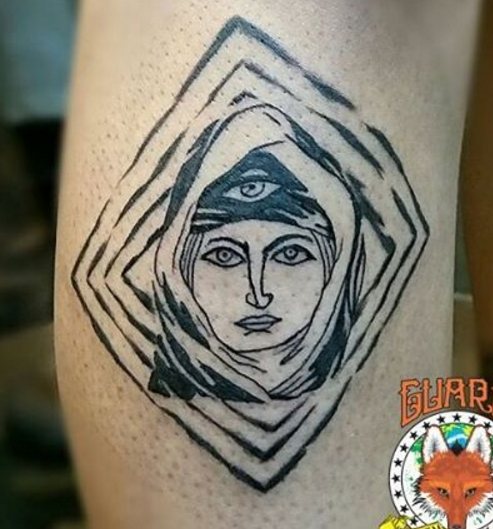
Muslim face tattoo of a girl
The prohibition of tattooing in Muslims. Who gets such tattoos after all?
Regardless of what is being considered - inscriptions in Arabic, symbols of Islam, patterns, complex ornaments, it is all considered unnatural. The religion of Islam provides for the holy book of the Koran, which states that any changes in appearance and on the body are offensive to the Creator.
If drawings on the body are allowed, it is only temporary images for the benefit of the person. Changes that cannot be reversed are forbidden according to Islam. That's why such a responsible step is taken either by those who have a different faith or a person is an atheist at all, and also if a person came to religion after the tattoos were done.
Do you think the ban on tattoos among Muslims is justified?
YesNo
Shariah decisions regarding tattoos
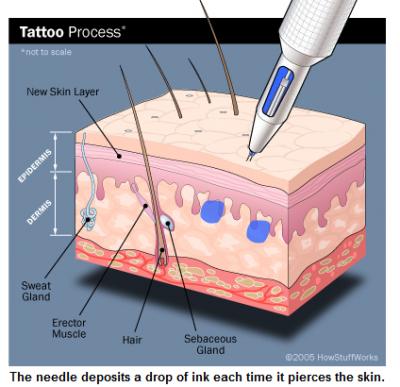

These are difficult times in which we are confronted from an early age with practices and realities that fundamentally contradict the precepts of our religion. This is especially true of young people, who are trying hard to distance themselves from the ideals of our righteous ancestors. Some are captivated by fashionable trends, some by the ideology of protest and the fight against pop culture.
So, for example, tattoos are becoming the norm among young people, not yet, however, in Muslim peoples, but this trouble, apparently, will soon touch them. It must not be forgotten that many are now adopting Islam and their new life is sometimes marred by traces of their former life.
Therefore, it is necessary to find out the Shariah rulings regarding tattoos and to clarify all the details.
Evidence of the forbidden nature of tattoos
. قال الله تعالى : ( إِن يَدْعُونَ مِن دُونِهِ إِلاَّ إِنَاثًا وَإِن يَدْعُونَ إِلاَّ شَيْطَانًامَّرِيدًا . لَّعَنَهُ اللّهُ وَقَالَ لَأَتَّخِذَنَّ مِنْ عِبَادِكَ نَصِيبًا مَّفْرُوضًا . وَلأُضِلَّنَّهُمْ وَلأُمَنِّيَنَّهُمْ وَلآمُرَنَّهُمْ فَلَيُبَتِّكُنَّ آذَانَ الَأَنْعَامِ وَلآمُرَنَّهُمْ فَلَيُغَ07َّ خَلْقَ اللّهِ وَمَن يَتَّخِذِ الشَّيْطَانَ وَلِيًّا مِّن دُونِ اللّهِ فَقَدْ خَسِرَ خُسْرَانًا مُّبِينًا } النساء / 117 - 119 .
Meaning: "They cry out instead of Allah only to beings of the feminine kind. They only call out to the rebellious devil. Allah cursed him, and he said: I will surely take away the appointed portion of Your slaves. I will surely mislead them, stir up their hopes, order them to circumcise the ears of cattle, and order them to distort the creation of Allah. Whoever has made the devil his patron and helper instead of Allah, he has already suffered an obvious loss.
قال القرطبي في تفسير هذه الآية :
وقالت طائفة : الإشارة بالتغيير إلى الوشم وما جرى مجراه من التصنععللحسن ، قاله ابن مسعود والحسن .
Imam al-Qurtubi explains this ayat:
"A part of the interpreters of the Qur'an said: by changing the appearance is meant the application of tattoos and similar things in the form of alterations for embellishment. This is the opinion of Ibn Masud al-Hasan."
قال القرطبي :
وهذه الأمور كلها قد شهدت الأحاديث بلعن فاعلها وأنها من الكبائر ، واختلف في المعنى الذي نهى لأجلها ، فقيل : لأنها من باب التدليس ، وقيل : من باب تغيير خلق الله تعالى كماق الابن مسعود ، وهو أصح ، وهو يتضمن الأول ، ثم قي : هذا المنهي عنه إنما هو فيما يكون باقياً ؛ لأنه من باب تغيير خلق الله تعالى ، فأما مالا يكون باقياً كالكحل والتزين به للنساء فق أجاز العلماء ذلك .
" تفسير القرطبي " ( 5 / 393 ) .
Al-Qurtubi said:
"[Regarding] all these actions, the authentic hadith reports that whoever commits them is cursed and that they are great sins. The scholars are divided in their understanding of the meaning that made it forbidden. Some have said that there is forgery[1] and others have said that it is a modification of Allah's creation, such as Ibn Masud. And this is more authentic and also includes the first meaning, and this meaning of damnation refers to the one whose change is preserved, because it is a change in the appearance of Allah's creation. And what is not preserved, like henna dyeing or women's make-up, scientists have allowed.
لعناللهالواصلةوالمستوصلةوواشمةوالمستوشمة
Ibn Umar (may Allah be pleased with him) said that the Messenger of Allah (peace and blessings of Allah be upon him) said: "Allah cursed the one who builds hair and asks for it, the one who gets a tattoo and asks for it."[2]
Detailed Shariah rulings related to tattoos, According to the Shafi'i madhhab.
The author of Mughni al-Muhtaj says: "A tattoo (al-washm) is the piercing of the skin with a needle until blood comes out. Then indigo (a type of dye) is applied there, so that the coloring occurs as a result of mixing [the dye] with the blood obtained from the piercing with the needle. And doing so is forbidden (haram), according to a hadith from the two Sahihs: "Allah cursed those who lengthen their hair and ask for it, those who tattoo and ask for it, those who tattoo and ask for it.
It is obligatory to bring it down if one is not afraid of the kind of damage in which tayammum[3] is permitted. And if he is afraid, then it is not obligatory to remove it, and there will be no sin on him after repentance[4]. And this is so if the tattoo was done with his consent, as al-Zarqashi said: that is, after his majority. And if it was done before, it is not necessary to remove it, as al-Mawardi said, i.e. his namaz and being an imam will be valid and there will be no contamination of what touches the tattoo being wet."[5]
Fear and danger permitting tayammum
Ibn Hajar writes in Manhaj al-Qawim: "A person does not perform tayammum because of an illness that has happened or is expected, unless he fears that he will lose his life or an organ from using water, or [fears] for the functioning of the organ, or [fears] that the illness will lengthen, even if the disease itself does not intensify, or that it will intensify, even if it does not delay the recovery, or is afraid that there will be dreadful marks, such as a change of color of a part of the body, [afraid of] dystrophy, paralysis, the appearance of holes [in the body], outgrowth of flesh."[6]
Therefore, the actions that can lead to such consequences are called "fear and danger permitting tayammum" by the faqih, because it is forbidden for a person to commit suicide, maim himself, or otherwise harm his health, and Allah Almighty has not made the establishment of His religion the reason for this, except for some exceptions, where sacrificing life and health is preferable.
A detailed analysis of a question from "Hashiyyat" by al-Tarmasi
Sheikh al-Tarmasi's remarks to the words of Ibn Hajar al-Haytami. Hereafter, for convenience we will denote it by the letter T, and they will be italicized so as not to be confused with the words of Ibn Hajar himself.
Ibn Hajar says: "It is obligatory to bring down the tattoo...
T: It doesn't matter if it hurts at that moment, as opposed to whether the pain persists afterwards .
...because it carries sujas in it....
T: That clarifies why it is imperative to bring it down. And as for putting it on, it is forbidden in any case, because the hadith says, "Allah curses those who tattoo and ask for it .[7].
... if one deliberately violates the regulations, because a tattoo is applied by piercing an area of skin until blood comes out, and henna or something similar is applied there. If such a person refuses to remove it, then the ruler must force him to do so. If there is no danger of forbidden things
T: And if he doesn't die. And if he may die, he has no obligation to remove it, since it infringes on the value of his life.
T: If the organ becomes covered with ugly spots, or if the organ becomes blotchy.
T: For example, if an organ becomes covered with ugly spots or a prolonged recovery, then there is no obligation to remove the tattoo, because the person has an excuse and it will even be forbidden to him, and his namaz will be valid without the need for replenishment.
...discussed by us in the relevant section, and if he has not transgressed the established laws[8],
T: This is the view followed by the author of the sharh, agreeing with as-Subki in his elaboration of the question: if the ma'asum[9] has violated the establishments, then the tattoo must be removed, even if he is in pain and it is covered with meat, until the fear reaches the level of permitting tayammum. And if there have been no violations of the statutes, then if there are difficulties associated with its removal, which there usually are not, even if the fear does not reach the level of permissible tayammum, it is not necessary to reduce it. If, however, there are no difficulties, then it is obligatory.
On this issue al-Ramli rendered a different solution, following the common words of the two sheikhs, and considered the most authentic [the following]: he who has not violated the regulations is not obliged to remove the tattoo, even if he does not experience any pain in doing so.
Al-Qurdi said: "Three opinions follow from what has been said: the obligation to remove as long as there is no fear permitting tayammum in all cases, and this opinion has been expressed in this book. [The second opinion] is that the obligation [to remove a tattoo] does not lie on one who has not transgressed permissible, in all situations, and this is the opinion of al-Ramli. And [the third opinion is] the difference in the details between one who is afraid of difficulties in removing it, even if they do not cause fear to the level that permits tayammum, and such does not have the obligation to remove it, and one who is not afraid, and for him to remove the tattoo is obligatory[10].
...For example, he had it applied forcibly or he had it done without being a muqallaf...
T: For example, if it was done by a minor. The difference is whether there is sin in doing it or not. If a person has the opportunity to remove it without the difficulty of doing that which leads to the forbidden and without the fear of permitting ta'ammum because of the acts that are done, then he should remove the tattoo and his namaz will not be valid if that tattoo is present, and whatever touches it, being wet, will become dirty in najaf. And if not.[11], then his being an imam will not be valid.
And the first case is when that which touches the place is soiled by being wet[12], is while the tattoo is covered with a thin layer of skin, because then the skin prevents contact with najasa, which is blood mixed with indigo or something else, as he said in "At-Tuhfat"[13].
...Contrary to the opinion of part of the scholars,[14] for if he is not afraid of the forbidden, there is no need to leave najasa on himself.
T: And then if he has not bridled it, his namaz is not valid.
And if he's afraid of it,
T: Afraid of what the tayammum allows.
There is no obligation to bring her down.
В "Hawashi" al-Madani says: "There are two conditions for the bringing down of such a tattoo, that you have transgressed in putting it on.
The first is that it applies to the one who is obliged to have it removed, so it is not obligatory for a madman, unless he is cured and it is obligatory for him to perform namaz, or for a menstruating woman until she is purified.
The second is that one should not die because of her information. And to this is added the absence of fear of that which is permitted by the Tayammum. That makes three conditions.
And for the removal of a tattoo from a person who did not violate the prohibitions on tattooing, two conditions are set: no fear of pain when removing the tattoo and that it does not become embedded in the meat.[15].
Author "Al-Bushra'al-Qa'im says: "It is obligatory to remove the tattoo," because a person bears najasa on himself by violating the shariah by having it removed. If he refuses to remove it, the ruler must compel him to do so mandatorily, like returning a stolen item. And his namaz will not be valid until the tattoo is removed. And anything that touches the place while it is wet is contaminated.
The tattoo is forbidden, and it is obligatory to bring it down under the following conditions:
The first is that there must be no benefit in it. If it carries some benefit and it cannot be replaced by anything, then you can leave it.
The second is that she should be on someone for whom namaz is obligatory. If it is a madman, then it is not necessary to take it, unless he comes to his senses.
The third is that the person should be alive. It is not obligatory to remove a tattoo from a dead person[16]".
If we summarize all of the above, the scholars of the Shafi'i madhhab unanimously assert that if a person has tattooed himself voluntarily, after his majority, and there are no obstacles for its removal and [in its removal] there are no dangers permitting tayammum, then, first, he should necessarily remove it, Secondly, the namaz performed by him with this tattoo is not valid and he should make up for it, and, thirdly, if the ink with which the tattoo was done is completely under the skin, then everything concerning this place in wet state will not be contaminated, and if not completely, then it will be.
But among the scholars of the Shafi'i madhhab there is disagreement [in details]: Imam Ibn Hajar al-Haythami believed that if a person did not fall into sin for applying this tattoo, for example, he was underage, he is still obliged to remove it, but his namaz will be valid, and Imam al-Ramli believed that, since a person did not fall into sin for applying it, he is not obliged to remove it either.
[1] That is, by distorting one's appearance one misleads others.
[2] Bukhari, no. 5937; Muslim, no. 2124.
[3] This type of harm will be discussed further.
[4] Repentance (tawbah) for the act itself is obligatory in all cases.
[5] Mughni al-Muhtaj, vol. 1, pp. 524-525, Dar al-Fayha edition.
[6] Manhaj al-Qawim, p. 132.
[7] Bukhari, no. 5937; Muslim, no. 2124.
[8] This is one of the discrepancies between Ramli and Ibn Hajar, which will be dealt with in more detail. The author of Mughni, as we have already said, considered that if the tattoo was applied, for example, before the age of majority, it is not necessary to reduce it.
[9] One whose life has value according to Shariah, that is, not a kafir-kharbi and not a murtadd.
[10] Al-Hawashi al-Madani, 1\183.
[11] That is, if the tattoo is not applied in this state.
[12] If the tattoo was applied voluntarily, in the taklif state, and there is no difficulty in removing it, permitting tayammum.
[13] Tuhfat al-Muhtaj, 2\127-128.
[14] We cited this opinion from the Mughni.
[15] Al-Hawashi al-Madani, 1\183.
[16] Bushraal-Qarim, p. 255.
Tags: al-Ramli sins ablution tattoo
What does this tattoo give a man for self-affirmation?
In ancient times, when religion and prejudice were not yet so developed, tattoos were applied to bodies everywhere, and among Muslim peoples as well. Some tribes and countries traditionally placed body images on infants as amulets. The oldest ideas are geometric shapes, intricate patterns and ornaments.
Why such drawings are needed today:
- To keep away from temptations and evil;
- to bring good fortune and success;
- To emphasize belonging to the Muslim peoples;
- to accentuate love for Eastern culture and traditions;
- To express religious prejudice;
- demonstrate Enigmatic and original style..
Drawing or inscription?
The ban on images on a person's skin applies to all subjects. Including excerpts from the Koran or inscriptions with the text of a prayer are prohibited. The only inscription that can be allowed is the data on the blood group and informing about a serious disease (e.g. for diabetics). Such tattoos sometimes become the only source of information for the timely saving of human life.
Boston Dynamics robots danced a New Year's dance: the movements are impressive
Yury Stoyanov revealed what ruined the comedy show "Gorodok
Moscow and other popular destinations for holiday weekend travel
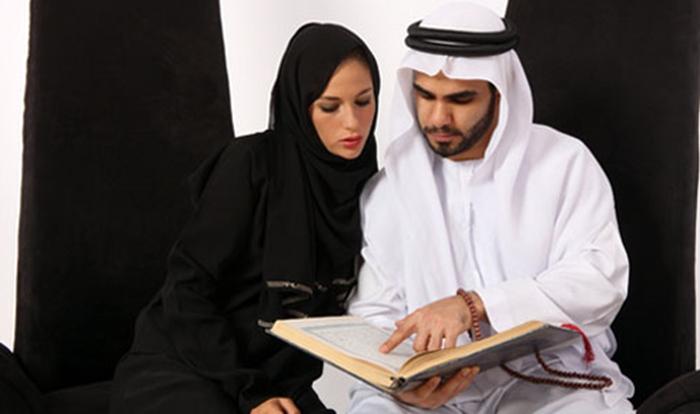

On what places men most often apply tattoos with Islamic themes
Islamic tattoos include several nations and countries, it can be Tatar, Turkish, Azerbaijani and other symbols, inscriptions, styles. The locations of the sketches can be different, from the neck to the feet. Each corner on the body has its own designation.
Shoulder
On the left shoulder it is customary to apply those sketches that are necessary to protect and attract luck in life. The right shoulder refers to wisdom, life priorities and values, love and family.
Forearm
If a man wants the tattoo to be always in full view of his surroundings, Muslim motifs can be applied to the forearm area. Especially advantageous will look inscriptions when they will be placed elongated from top to bottom or in another direction.
Tattoo on the wrist
On the wrist since ancient times and until today it is accepted to strike those variants of tattoo, that will attract the energy waves in an increased rhythm. Here should be neat concise drawings of a personal nature.
Tattoos on the palm, on the hand and fingers
Especially often Muslim tattoo motifs in the format of inscriptions are found on the fingers of the hand. It can be a name or a phrase with deep meaning, located on the skin. On the hands place demonstrative nailings, on the palm, on the contrary, non-trivial personal options.
Tattoo sleeve
The coolest trend in recent years is a tattoo on the arm in a sleeve format, when the picture covers the entire circumference of the skin, leaving no gaps or empty spaces. In this format, masters can depict patterns and ornaments, supplementing them with Islamic symbols, Arabic script and other inscriptions.
Neck
Any sketches on the neck will look elegant and stylish. More often than not, men use the side, applying here inscriptions, small laconic symbols, patterns and even a small ornament.
Chest
On the chest it is customary to wear those options, which will help to protect the human destiny from evil, danger, and bad luck. These can be patterns in the Islamic tradition, to which the master can add symbols, various objects, animal or plant ornaments, inscriptions.
Side
On the side there is enough space for large and complex sketches, here is a straight smooth surface, and the applied drawings will be available only to the owner and his immediate surroundings.
Back
The back is the place where there are no limits for the realization of fantasies. Here you can apply absolutely any picture. The scale, color scheme, complexity and meaning are not important.
Spatula
In such places, it is customary to imprint symbolic and sacred drawings, which help to tame the dark side and get rid of weaknesses and temptations. Most often, these are mystical and religious symbols, inscriptions, and patterns.
Foot
At the leg perfectly fit ideas such as motivating and pushing to determination inscriptions, as well as symbols that help find the right path in life.
How to choose a tattoo sketch in relation to the place on the body?
If a man has already decided on the place on the body and the stylistics of the tattoo (Muslim motifs), you can follow some simple tips to choose the right sketch:
- It is not necessary to draw a sketch from scratch, you can take several different elements from the Internet, reuniting them into one composition.
- It is not necessary to reject complex ideas, an experienced master will be capable of any idea.
- Before you go with a photo of the prepared sketch to the master, it is important to know exactly the meaning and translation of the drawing.
- If words are provided in the drawing, it is extremely important to find an accurate translation, as there are also many dialects in the writings of Muslim countries.
- Names are not always a justified decision, as there is no benefit from them. The name will not give anything to the owner, and someone else's name can become irrelevant over time.
Opinion of an expert
Viola Madison
Master of tattoo, experience of 8 years
Before rushing to the master, a man should compare the desired sketch with his appearance, image, lifestyle, religious prejudices and field of activity. One must not contradict the other, otherwise sooner or later will have to deduce the tattoo by laser, which is painful and expensive.
The punishment for tattoos
In Muslim countries you will not find a single tattoo parlor. And it is clear why: a man who decorates the sacred temple of the soul with drawings will be cursed. The money he dares to take for such work is considered stolen. According to Shariah, both the action itself and the payment received for it are cursed, and that is what any normal Muslim fears.
Not only tattoos are taboo in Islam, but also any kind of body modification. Orthodox Muslim women do not get hair extensions. Neither men nor women get piercings. For any follower of Islam, body transformations, which are now popular in Europe, are a monstrous sin.
Styles and colors that are popular for Muslim style tattoos in 2018-2019.
The style of execution can dramatically change both the appearance and the visual perception of the body art. The following options apply to Muslim ideas:
dot work - dot work, coolest in this style look ornaments;
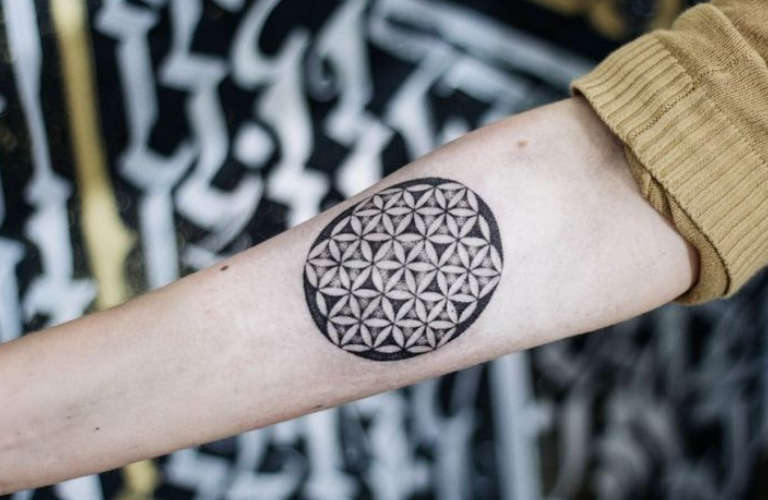

black of work - the master is using only black paint, such a variant accepts inscriptions, symbols, and also patterns and ornaments;
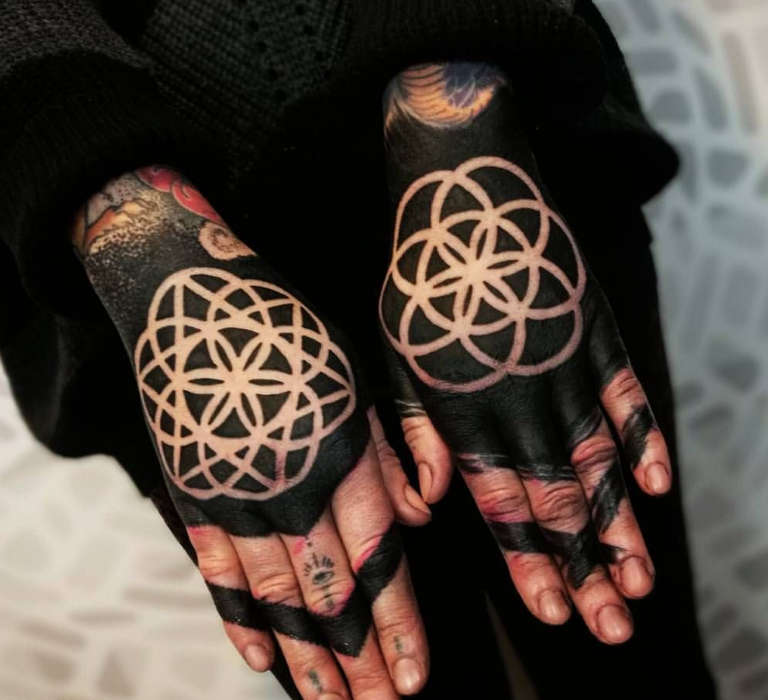

ornamental - Polynesian style, which can also depict patterns and ornaments;
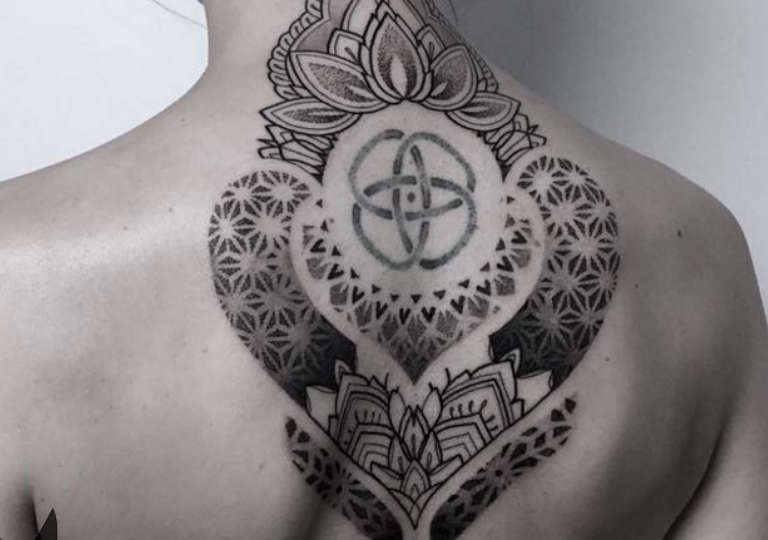

geometry - clear lines, simple and complex figures forming intricate patterns and symbols;
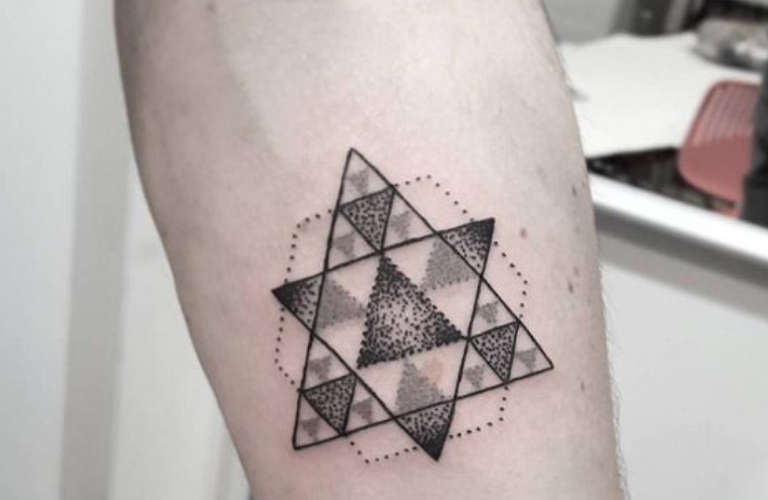

realism - In this style you can draw any tattoo, resulting in a believable sketch compared to the original;
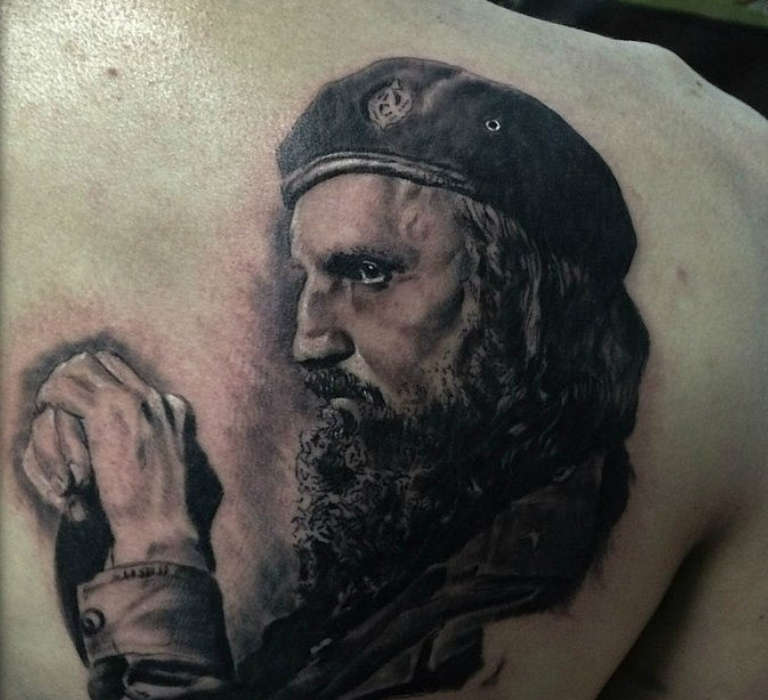

3D - three-dimensional and three-dimensional pictures, creating the illusion of perception of space.
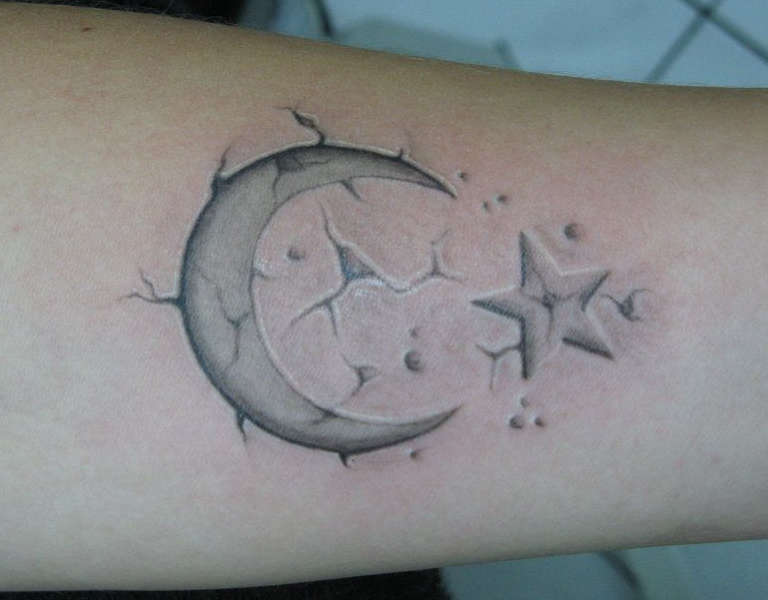

Most often the Muslim style practises monochrome tattoos, where the use of gloomy monochrome sketches prevails. Colored tattoos for men are a rarity; such a choice is made by creative, expressive, young and unorthodox guys.
Symbols, which can be combined with a Muslim tattoo
To the mysterious and mysterious Muslim drawings on the body, masters not infrequently add different symbols, such as:
- an eye . - A symbol of secret knowledge, developed intuition;
- mosque - connection with the Lord, faith in the help of the Almighty;
- rosary - belief in the rebirth and immortality of the soul;
- palm - symbol of friendship, help, blessing of the Lord;
- star - A strong-willed and strong-minded person;
- the sun - warmth, energy, goodness and positivity;
- flowers - a reflection of a man's inner state;
- moon or the crescent moon - symbolic for Muslims, distinguishing faith and nationality;
- inscriptions - Meaning depends on the translation of words.
For reference! Also as a supplement can be used various patterns - scrolls, spirals, knots, continuous lines. They enhance the sacred meaning of many of the tattoo, bring in their meaning more magic and mystery.

